If you haven´t read it yet, you might start with Part 1 of the #biscaysailing series by clicking here.
As with every summer since I started with sailing there was also this summer of 2020 a big highlight coming up: Of course I couldn´t refuse to be part of the crew when skipper Wilfried called me and invited me to joining him aboard FREE WILLY, his own yacht, on her homecoming trip from the Canary Islands back to Germany. “It´s too hot down there and in 5 years I´ve seen almost everything”, he aregued: “I am longing for the mild weather of the Baltic Sea, the Archipelago of Sweden, the food, the culture …” It was a no-brainer for me to agree, but under one premise: I´d be part of the one leg when the boat will be crossing Gulf of Biscay. And here we are – pent up in a plane, wearing a mask, flying 3 hours down to Portugal.
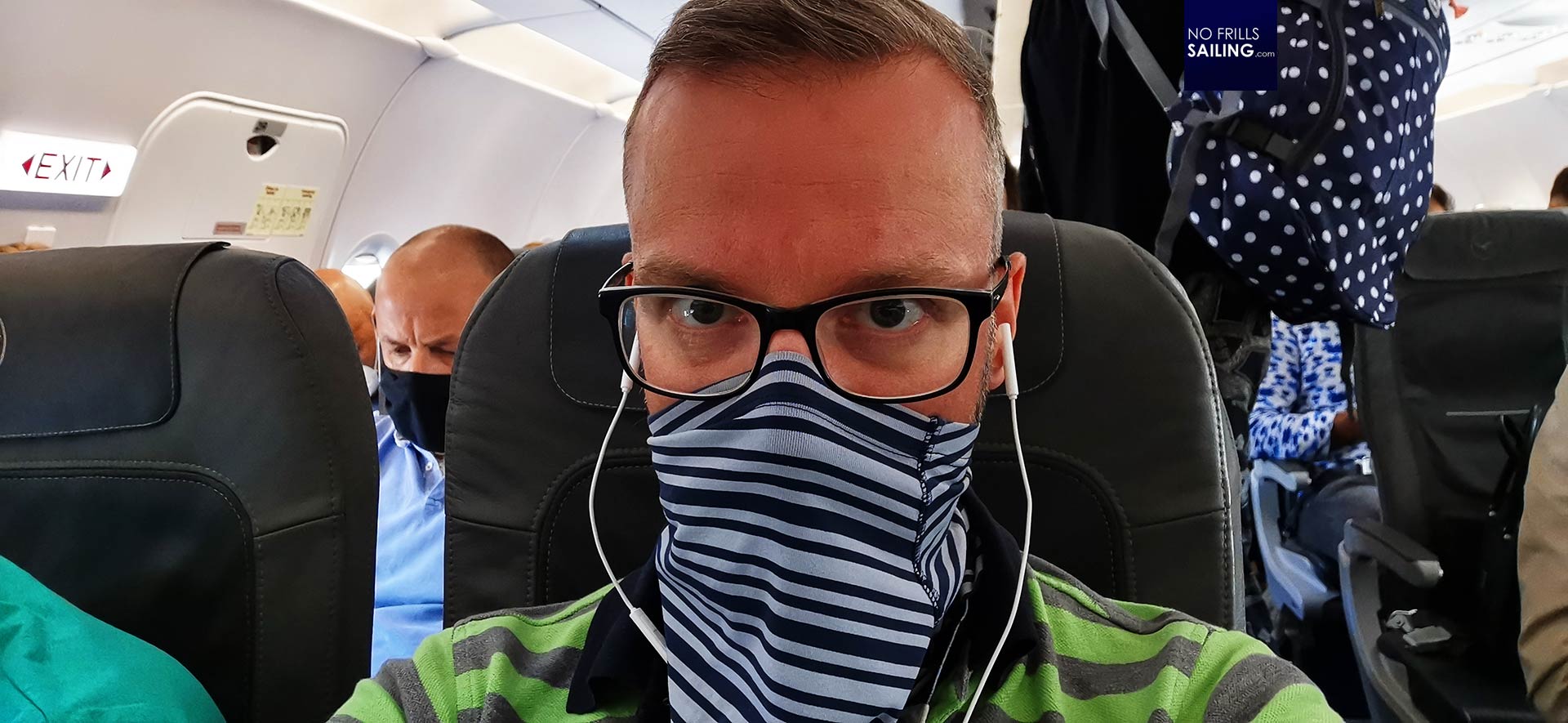
Travel in Corona-times is annoying and brings up even more all these things we do not like about modern travel like a burning glass: Crowded places like a plane, annoying body scents, undercutting of personal minimum distances … it was a mess. But in a way also kind of healthful because it taught me a lesson to enjoy and cherish much more what makes sailing in a boat so beautiful: Being off the grid, being literally cut off from humanity, alone outside. And even if the personal space aboard is very, very limited too, it´s the care of your crew members not to invade this little space.
A happy return to Porto
After the trouble – and I am still trying to get back the money – with my first ticket being cancelled by whizzair I arrived without problems with Lufthansa in Porto. A nice coincidence: My fellow crew mate Markus happened to having booked the same flight so we travelled together and got to know each other fairly good. As it turned out, Markus was as well part of a crew delivering one of the six Dufour yachts to the Canaries three years ago, a trip, I was as well part of where I got to know our skipper, Wilfried. The sailing world is small, indeed.
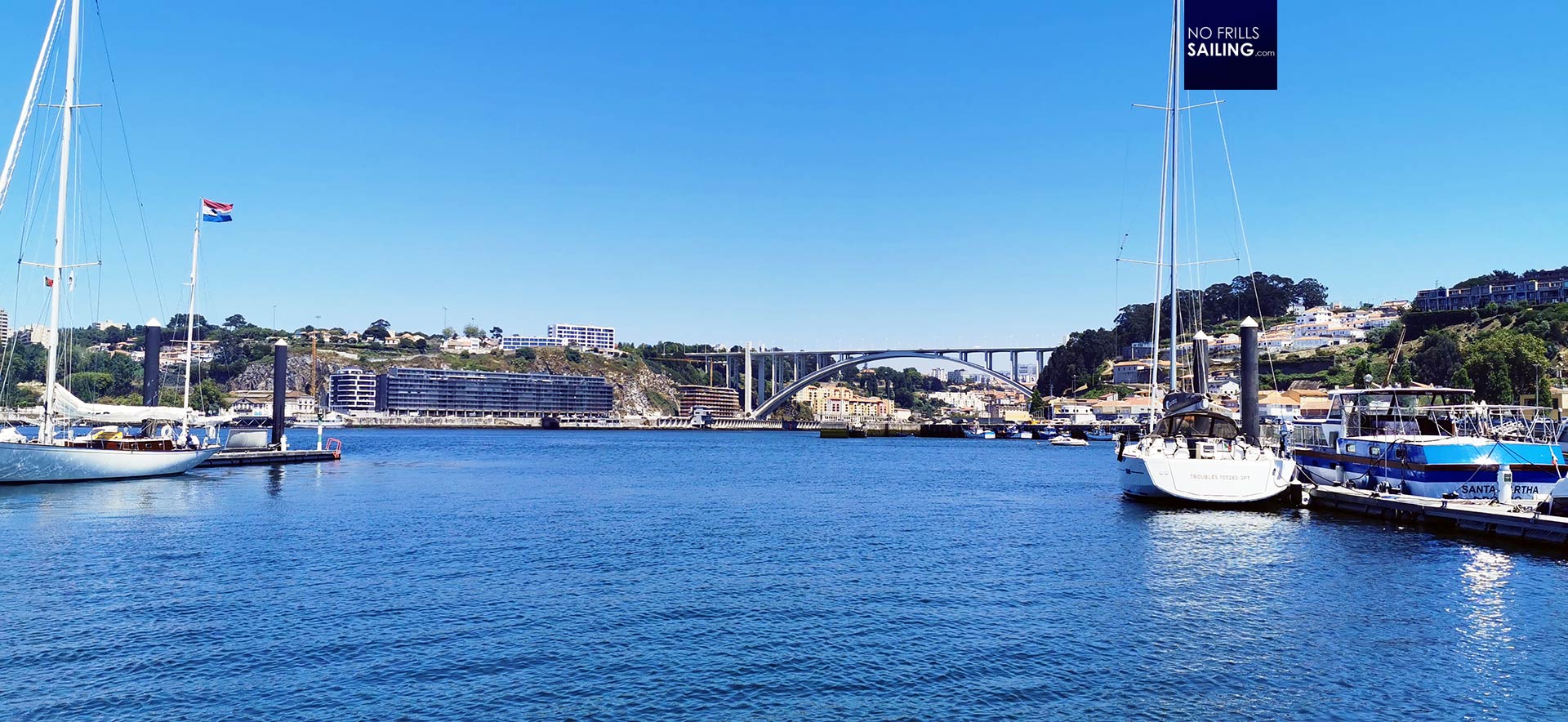
FREE WILLY, the boat it was all about, was moored in Douro Marina of Porto which we reached by cab in a 20 minute drive from the airport. It was a hot summer day but a fresh breeze vented the harbor. I know Portogal from a past trip by bike some years ago and I instantly acknowledged the ultra-clean atmosphere, the sharp colors and the quality of air being push inland by the winds bringing clean, salty, fresh and cool winds from the Atlantic Ocean. We hauled our bags to the pontoon and waved: “Hey, Skippy, come over, open the door!”, we yelled excited over the marina.
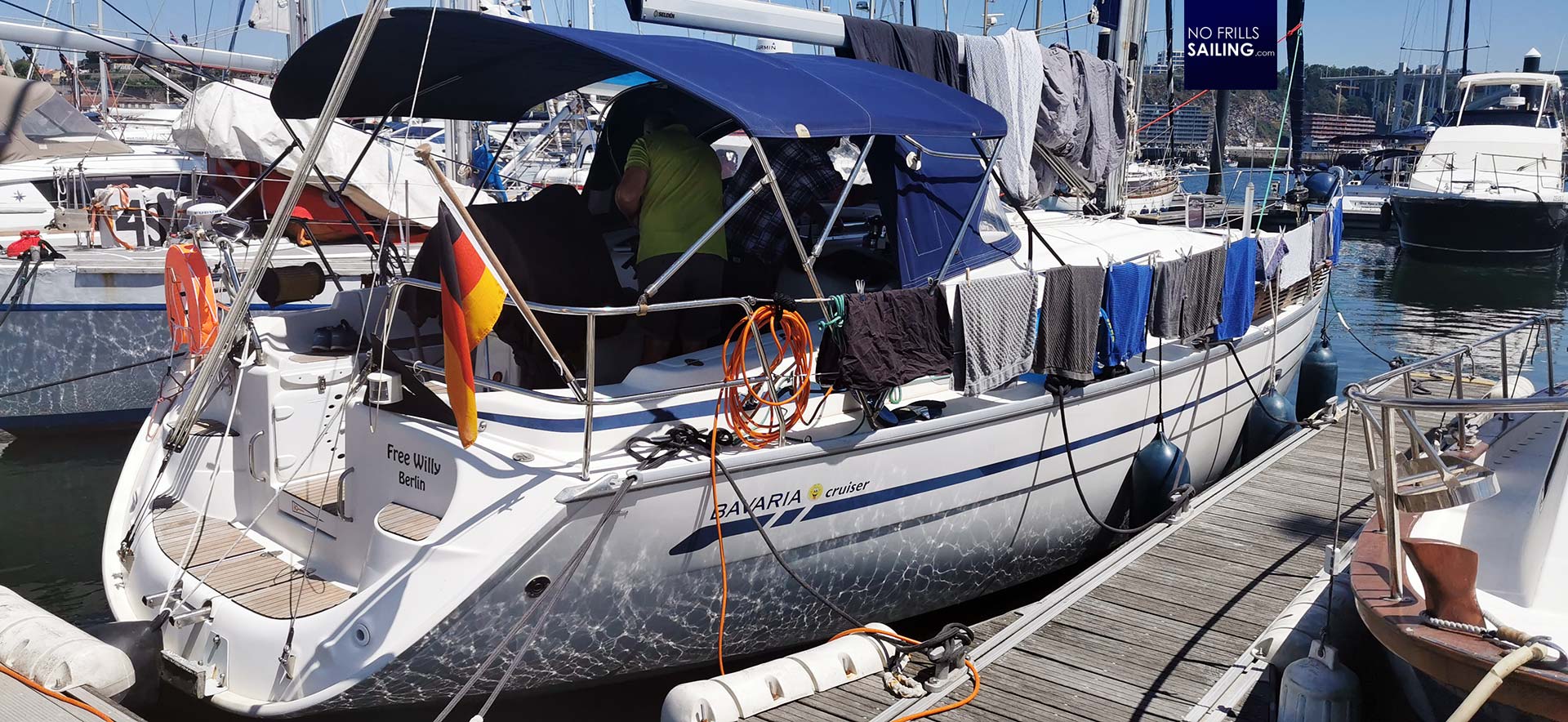
Wilfried welcomed us wholeheartedly and waved us to come to the boat. Aboard FREE WILLY it was washing day. One of the old crew members who helped bring the boat to Porto was still on board, clearing his cabin for the new complement. Excited as I was I couldn´t wait to explore my new home fpr the coming two weeks. Skipper Wilfried suggested that I´d take the port side aft cabin, Markus would get the starboard situated cabin: “That´s because you are the slimmest of us all. Assuming that we fat guys are in the galley providing food, it´s better for you slenderman to get in and out of the cabin passing the ship´s cook …”, Wilfried mocked, but I had no problem with being port side.
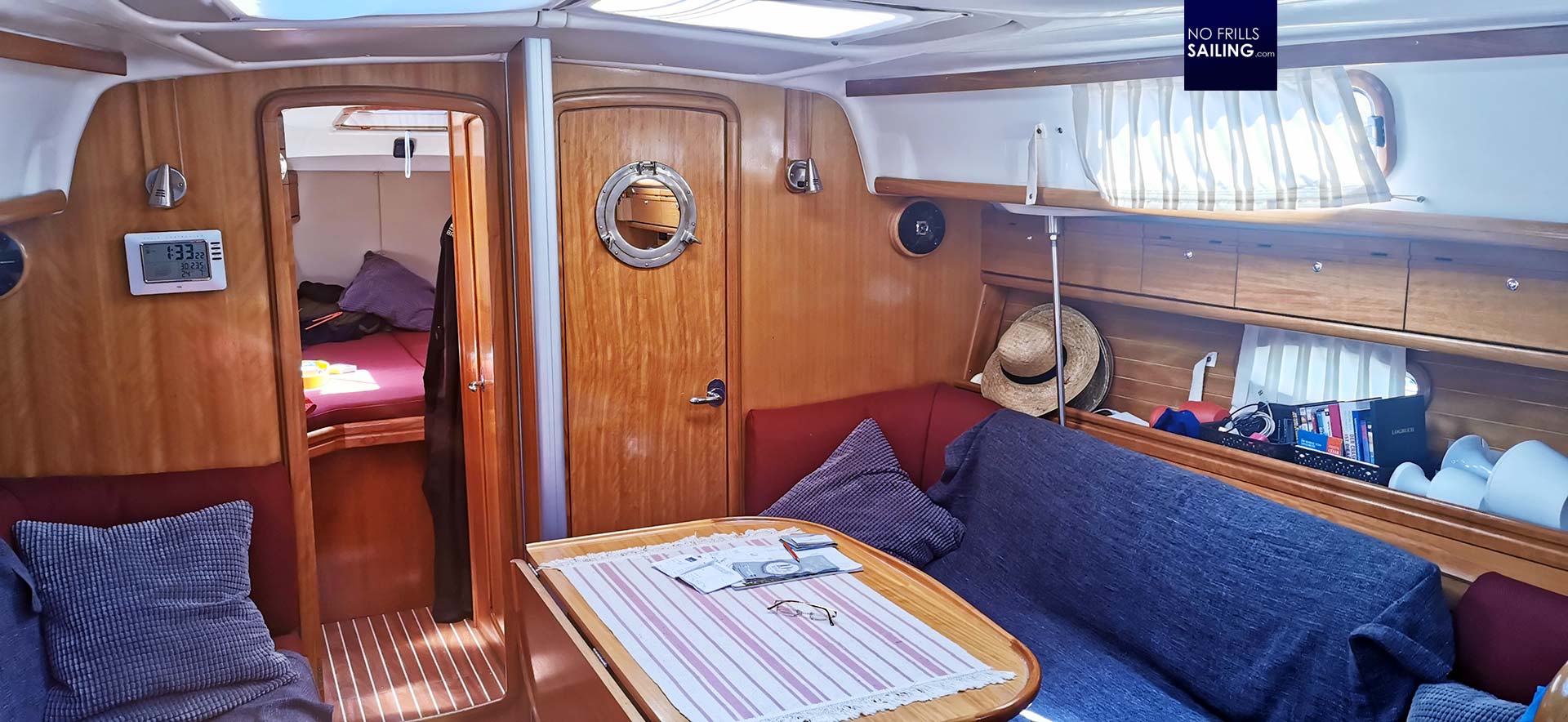
FREE WILLY is a German-made sailboat, built in the year 2006 by Bavaria. She is a 37 feet yacht, 11.40 metres long with a 2 metre-draft. Down below her interior is classy, very ship-like. I loved to see that some 15 years ago even production companies like Bavaria, supplying the reasonably-priced market, were making boats with such a fine quality in interior fitting: Rounded edges, lots of real, massive wooden parts. On the other hand I could quickly see where cost pressure was beginning to have major influence in interior fitting quality: Metal fittings of questionable durability and some cheap plastics appeared here and there. For me, working for another large production boat company, this “time travel” was and still is very important and interesting. But job aside: I liked the interior of this Bavaria 37 Cruiser and felt fine at an instant.
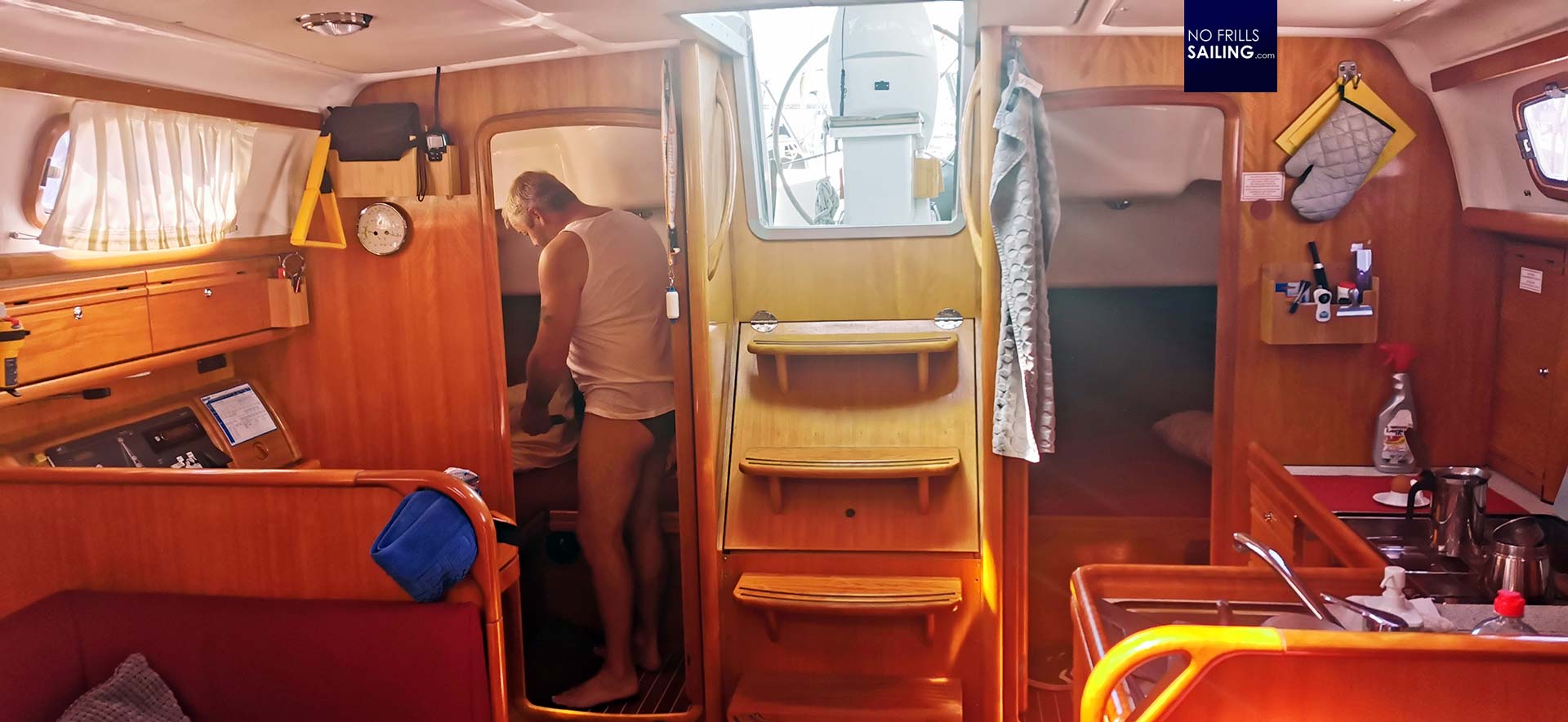
Arriving to a new boat is always the same: A definite process begins and usually it starts with unpacking the personal belongings, putting clothing from the bags to the stowage. Being a pro in these things I had packed my duffel bag in Germany already in a way that I could grab the individual batched of underpants, T-Shirts and so forth and put them into the large cupboards. It took me no more than 10 minutes to make the portside cabin “mine”.
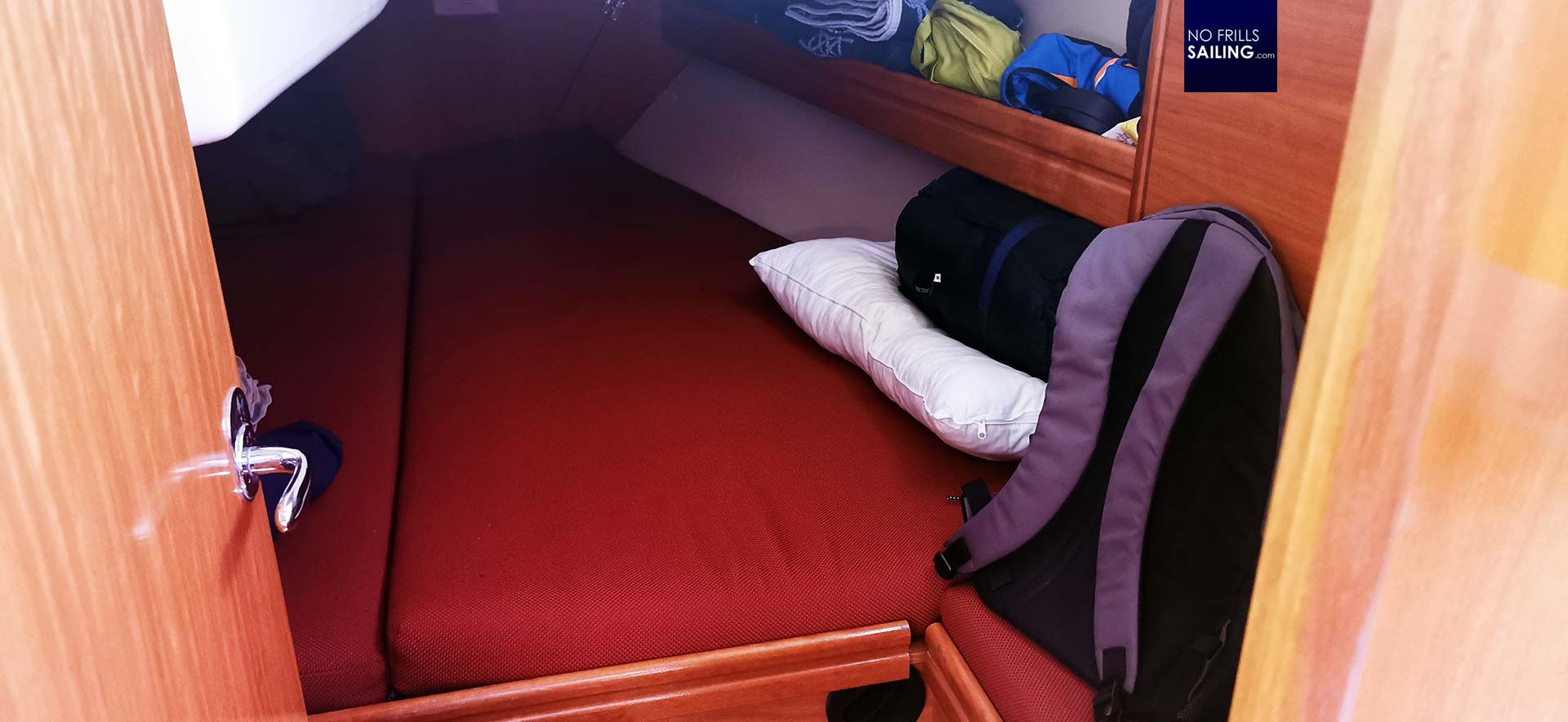
Again credits to the old Bavaria-designers to come up with such a clever layout of the cabin: Although fairly classic and still used in modern-day boats, I found that the utilization of space in such a mid-sized 37-footer down below was exemplary. For example, I was able to stand up freely with enough space around my head to getting dressed/undressed without a problem. Plenty of stowage in the large cupboard and – I am missing this in modern boats! – a shelf running all the length of the berth abaft, creating another huge rack for stuff. That done, I went up to the cockpit – time to plan the trip.
Getting the boat ready for the big trip
Wilfried is an experienced sailor who is on the water for more than 40 years now. Nearing his 70iest birthday is an information I couldn´t really believe because his complete appearance does not make you think that he is that old: Still very good in shape he manages to grind the winches, jump aboard or run all through the rocking boat like a weasel. Wilfried is a role-model example of how healthy a socially and physically rich life is in general and how sailing, being outside, meeting people and being constantly mentally challenged by the tasks that sailing brings with it has a positive effect on both your body and your psychic status. Hats off to our Skipper!
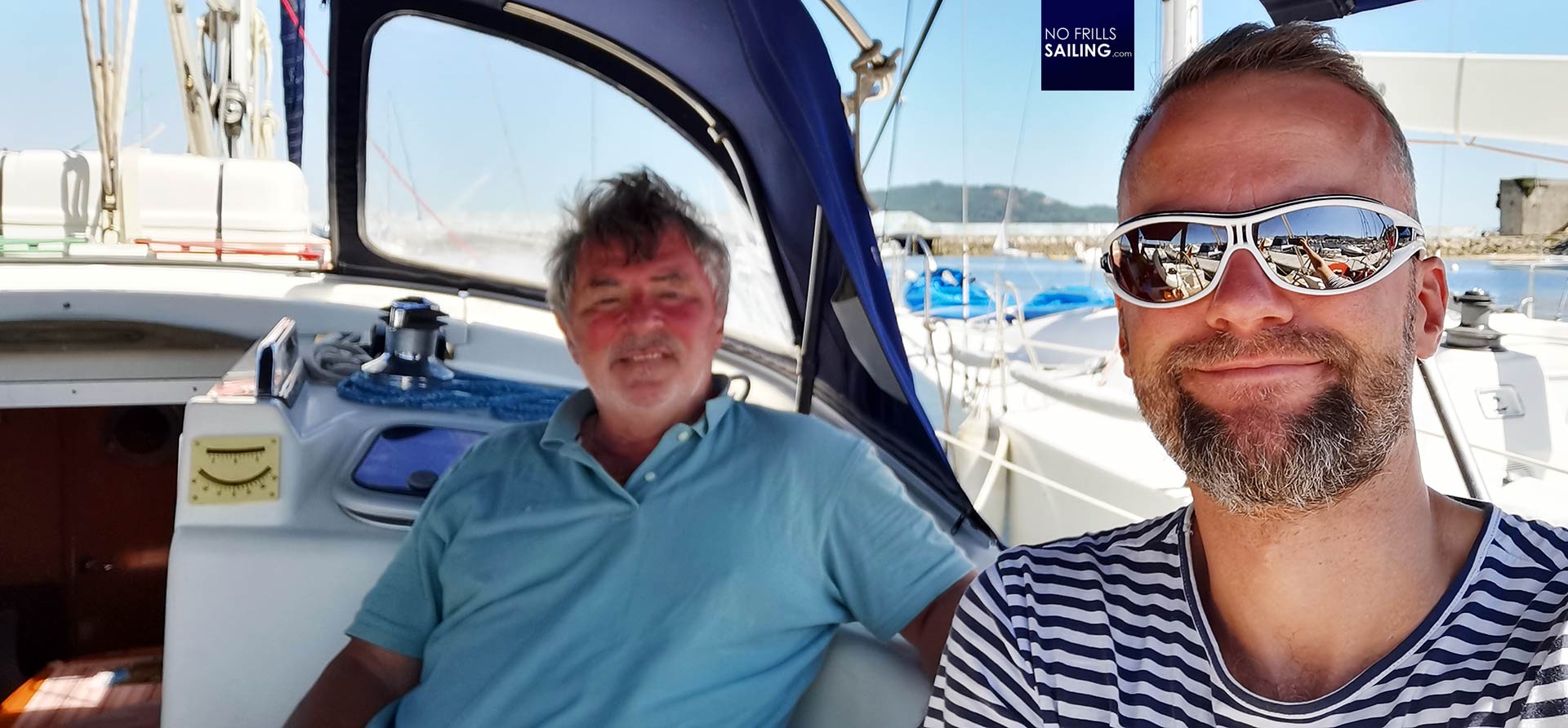
FREE WILLY, now being moored in Porto, has a long trip behind her. Wilfried sailed her up from the Canaries, passing the Gibraltar Strait to the Spanish town of Almeria last year where he wanted to be based for a while: “I couldn´t stand the Mediterranean atmosphere though!”, he told me once: “It´s one the one hand this overcrowded mass tourism with thousands of annoying people pouring into the country, the disfigured coastline by a mass rape of concrete hotel-monsters but also the fact that most of the people I met have been holiday-makers. I need to meet sailors, you see? Real sailors. You don´t get them there.” So he decided to go back to Northern Europe: Milder climate, nearer to his home town of Berlin, so much still to explore.
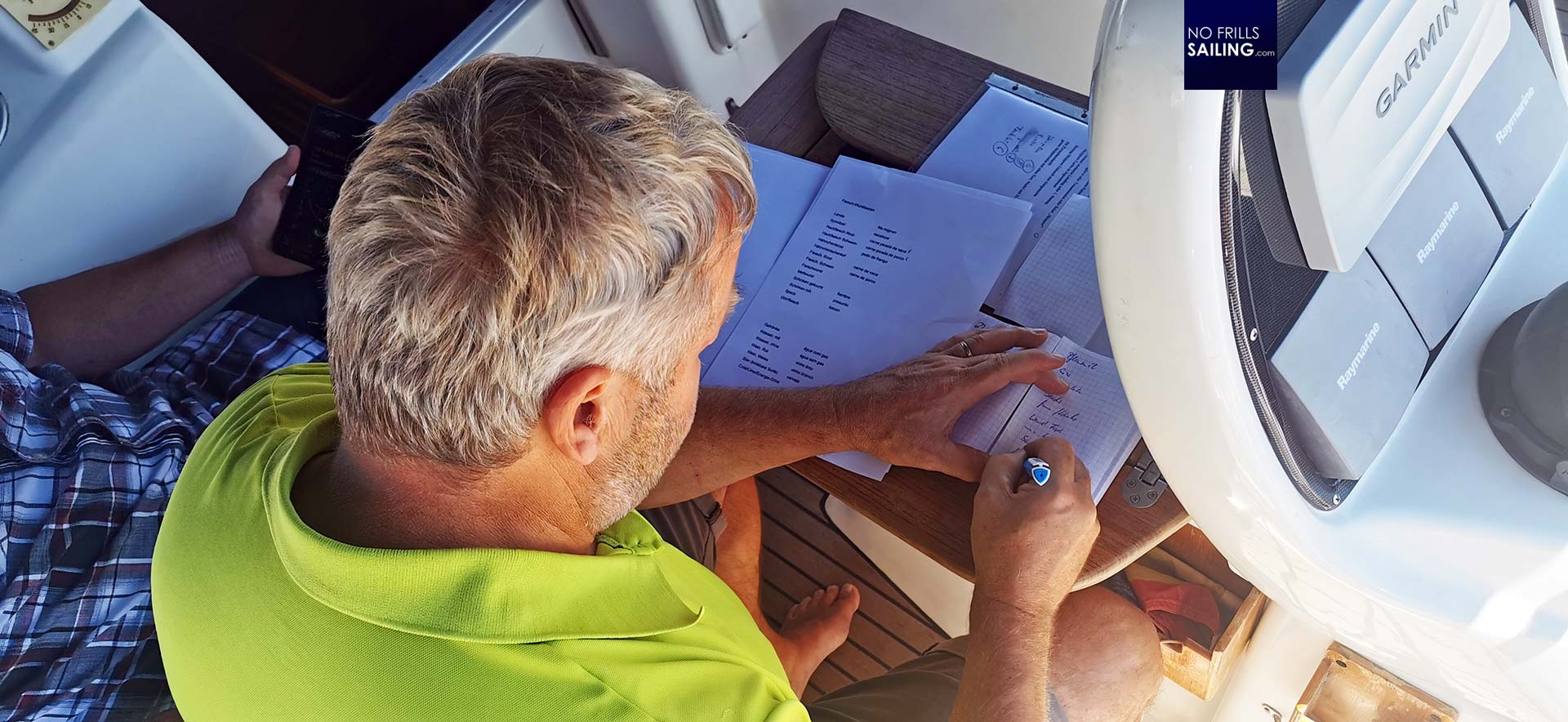
As we sat there in the cockpit, Markus came up with a chunk of blank sheets and some printouts: “Let´s talk food.”, he insisted and began to recite a list of yummie-sounding dishes he pre-fabricated back home. Assumingly he likes cooking, we thought, and both Wilfried and I couldn´t agree more to promote Markus to ship´s cook and give him free reign over the galley. He nodded, happily, and began to set up a shopping list: “Much to do still, folks”, he said and began to break down the dishes into goods to buy. In the meantime I asked Google for the next supermercado and found one just 1.400 metres away. Okay, let´s go then …
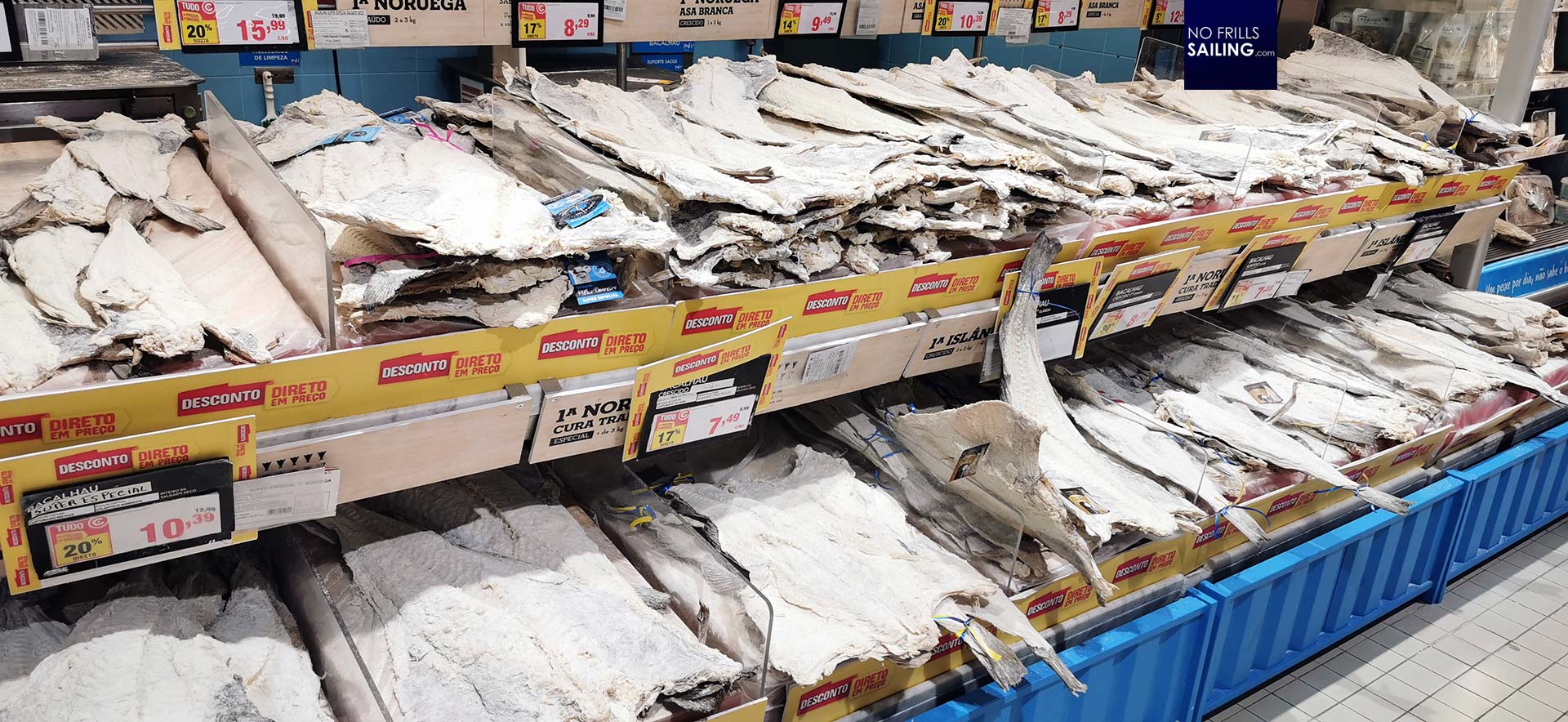
Shopping is not among my favourite spare time occupations but that changes when I am abroad. I just love foreign supermarkets because although they all are the same there are big time differences. Being in Portugal for example means that the emphasis is clearly on fish in all sorts and forms, especially the dried cod which was piled up in different sizes and qualities. It took us both two or three hours to collect food for the coming 5 days and bring them bag to the boat (by cab of course, Porto is a town founded on steep hills, no way transporting all that stuff by foot). As everything was stowed away I used the spare time to take a walk on the beach.
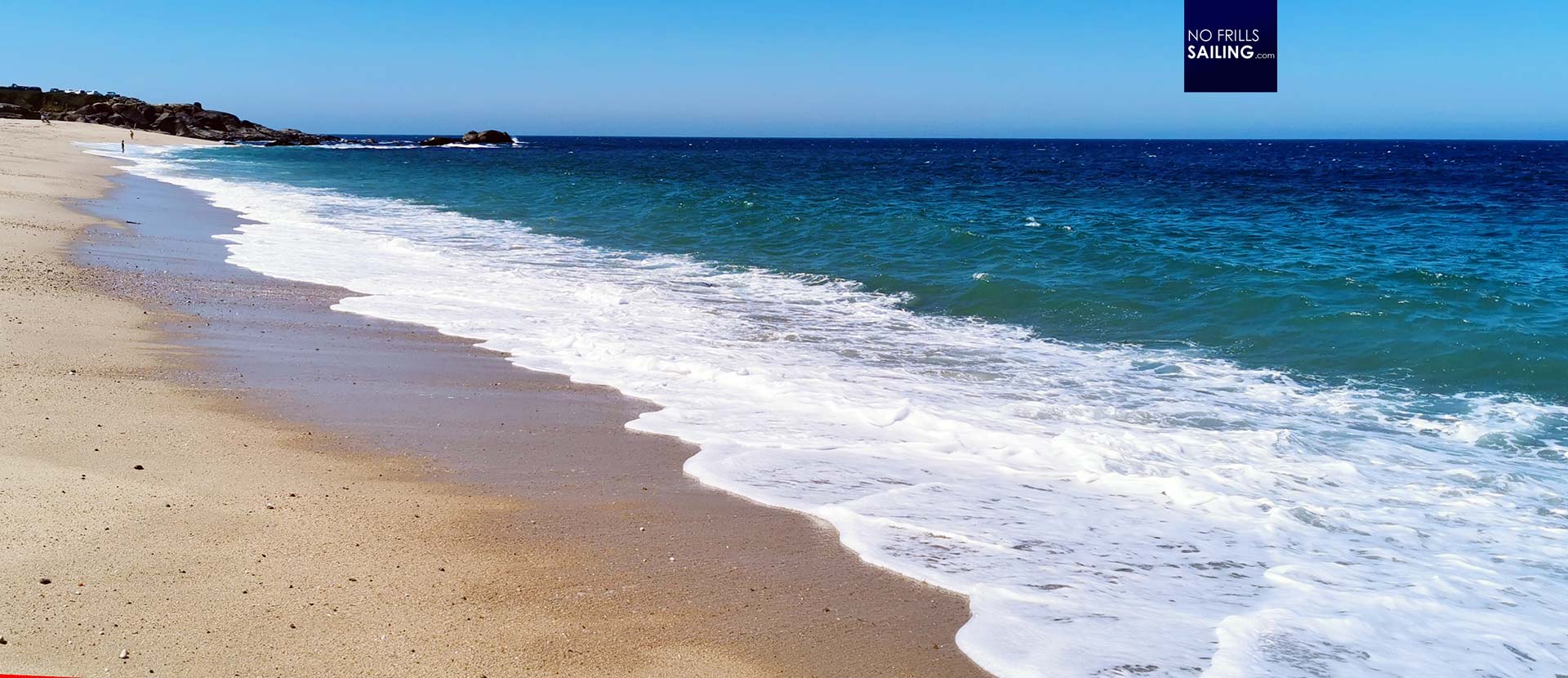
The marina of Porto is situated fairly far away from Porto city centre – but therefore near the Ocean. It´s a walk of twenty minutes along river Douro estuary to reach the coast. A huge sandy beach, not very much crowded – I guess due to Corona-virus and the absence of tourists – and large, breaking waves coming in from the Atlantic Ocean. I spent some time there, alone, contemplating and thinking of what the coming sailing trip would bring. Being out here on a “real” Ocean was the one thing I was looking forward to the most: Real, long waves, not those choppy steep annoying short intersecting waves of the Baltic. Well, I was going to be taught otherwise …
In the delay: Meet the mighty Nortada
We´ve had a nice dinner that evening and bid farewell to Andreas, one of the old crew. The next morning, while having my first onboard-made coffee, I checked weather and first doubts whether a casting of would be possible came to my mind. As Wilfried joined me in the morning sun and as well opened his weather apps on the phone, he agreed: “See this wind coming down from the North? That´s deadly. We cannot set sail in these conditions”, he stated. And right he was. After reading into the prevailing weather conditions of the Iberian Peninsula we discovered this one name: Nortada.
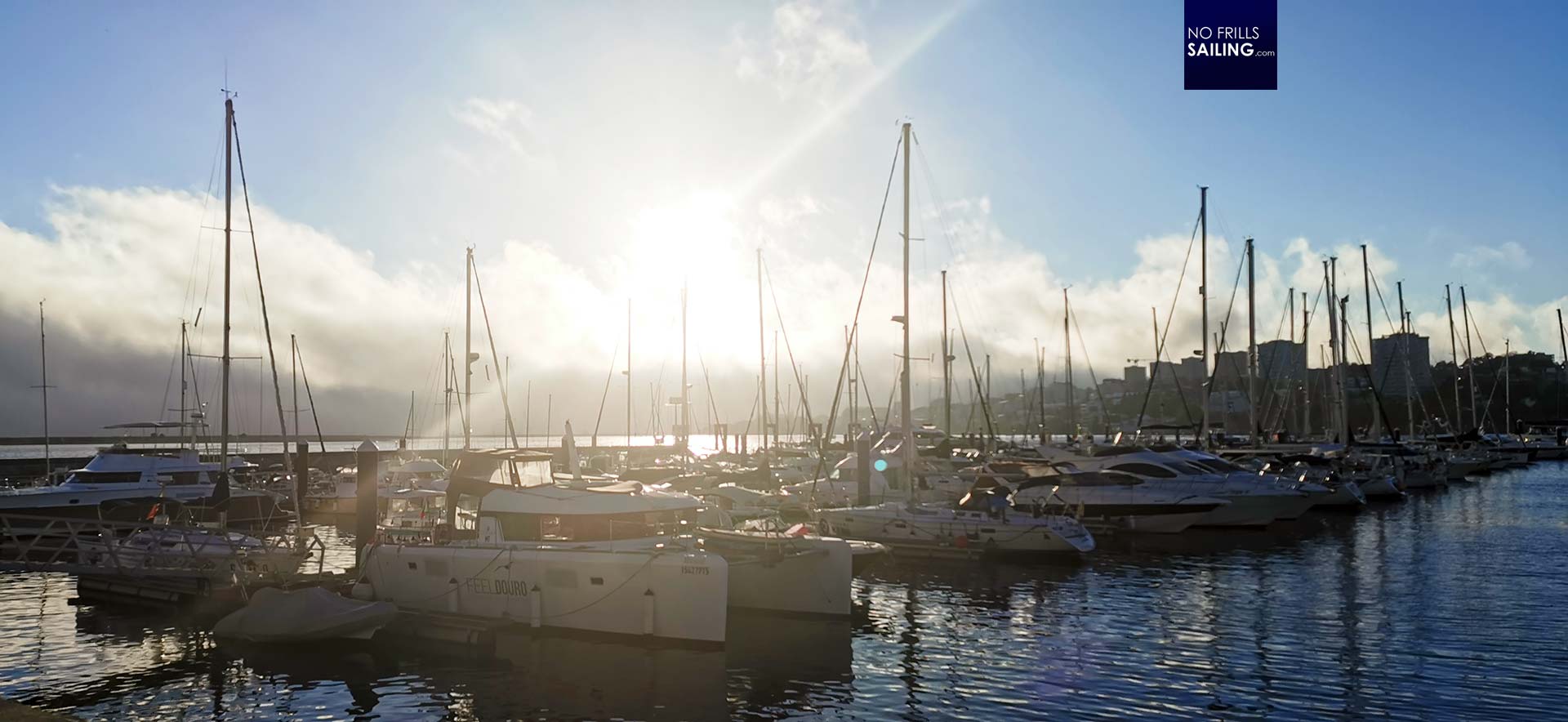
Looking westward I could clearly see a band of thick clouds outside the harbor: “That band of clouds is visually indicating the Nortada”, Wilfried stated: “Moist, cold air is pushed down south by a pressing air mass that is ponding at Cape Finisterre in the North. Thus creating a cape-effect that is accelerating this air mass and pushing it with high speeds south.” As the land mass of Spain and Portugal right next to this stream of wind is very hot and dry, both are rarely mixing. So, the Nortada has virtually nothing to dilute his power. The wind is hurling down South – blowing for hours, days and sometimes even weeks.
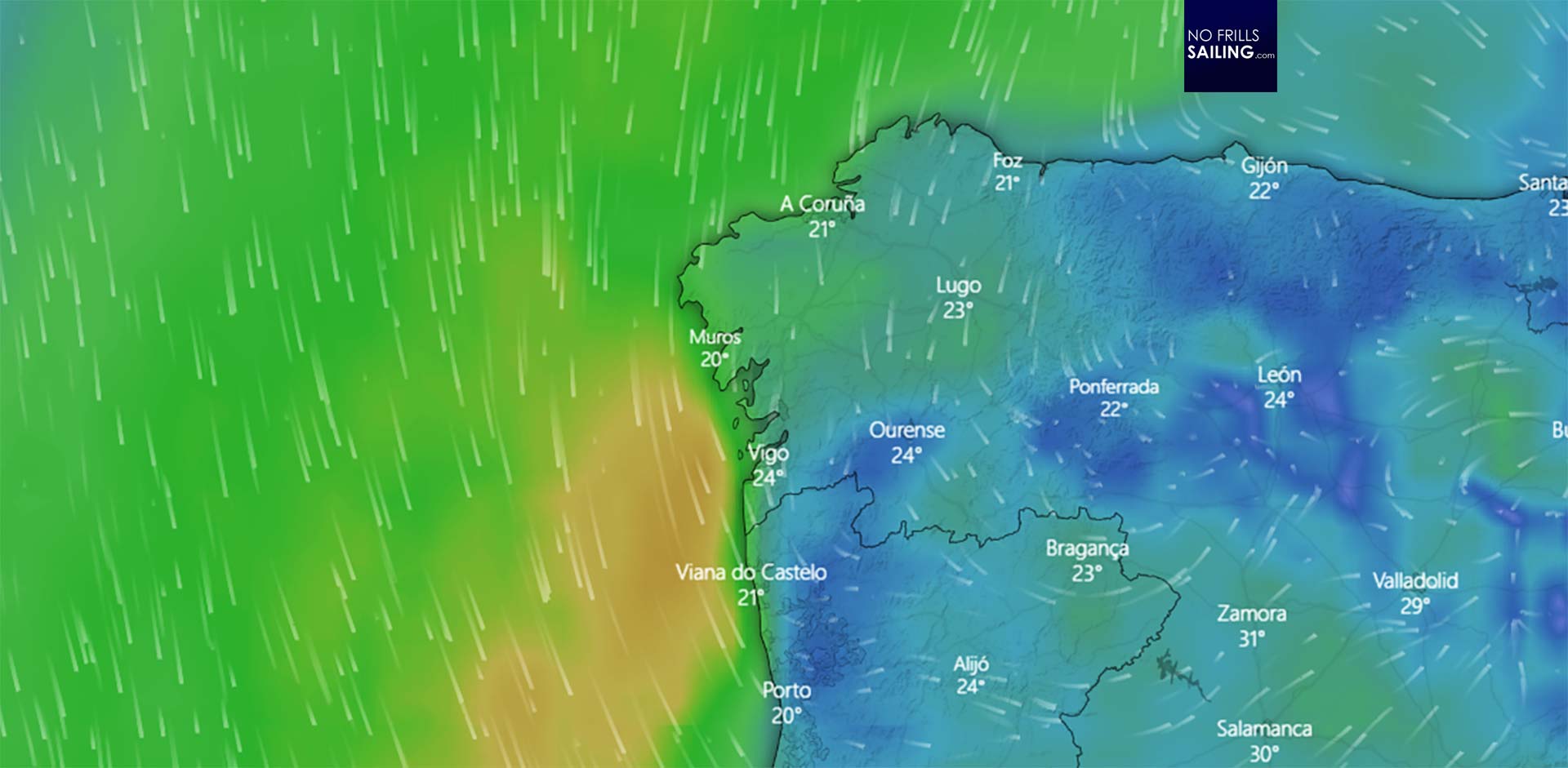
I could clearly see these clouds literally flying by, right there where I was strolling yesterday under a clear sky. “Now you will have very, very strong winds of 20 to 25 knots average and in gusts even more – no chance for our boat!”, Wilfried stated. The Bavaria just got a brand new Volvo-Penta engine, which was good, but god knows why the Skipper opted for the smaller 30 horsepower engine. Which is a fuel-saving wonder of course, but 30 hp on a 37 ft boat, well, that´s far too less power to win against a +20 knots headwind. “And don´t forget to look at the coastal tidal currents here and – more so – the large waves rolling south along the wind. No chance, we have to stay here and wait.”
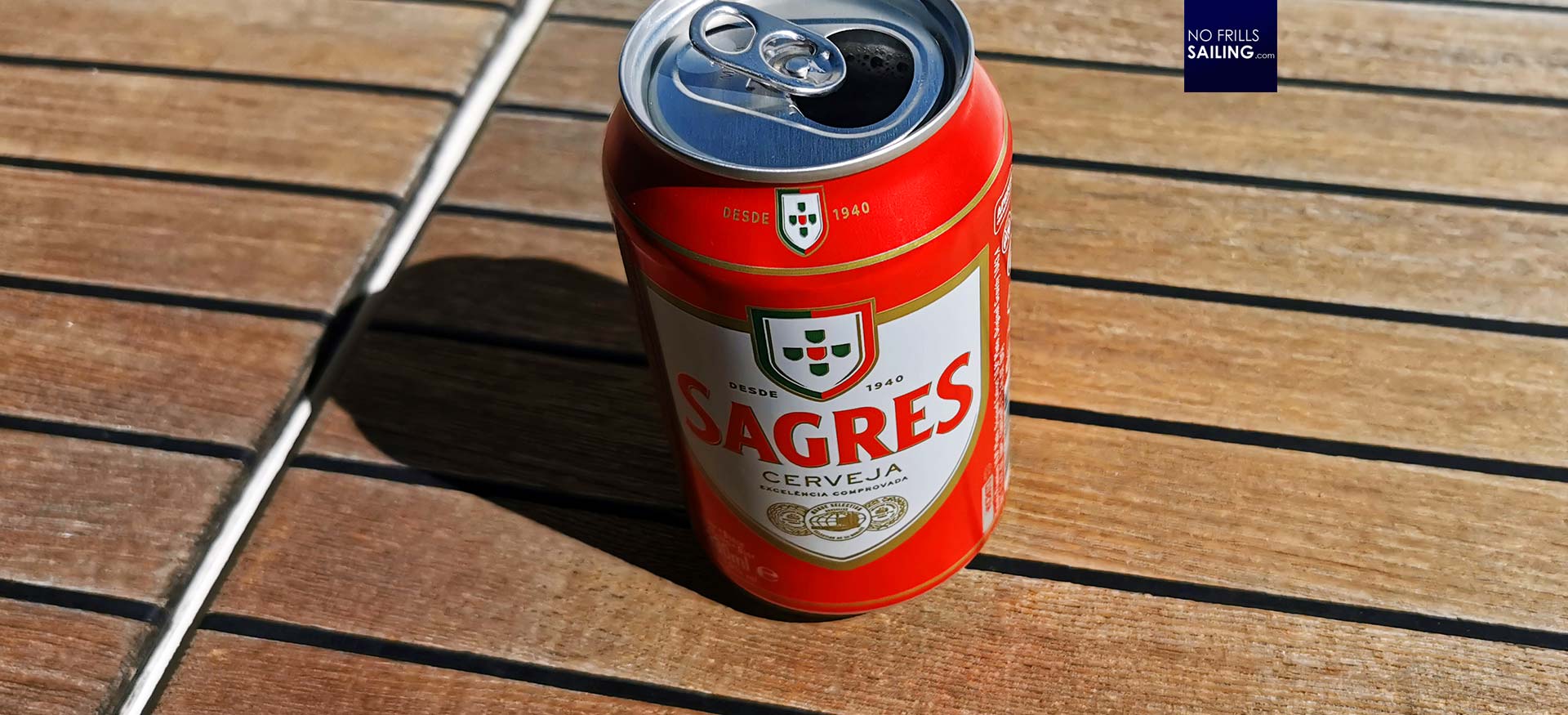
Well, that said we opened one more tasty Portuguese beer and enjoyed the sun. There wasn´t anything else we could do at this point: The boat was ready to go, fully stocked. As both Markus and myself had visited Porto already we felt no urgent need to travel to the City centre and so I tanned and loaded my body with Vitamin D, Wilfried indulged himself into reading a book and Markus refined his menu. A day spent in the marina – it felt like proper holidays and surely helped me to “calm down” from working stresses but it also felt like being a lost day.
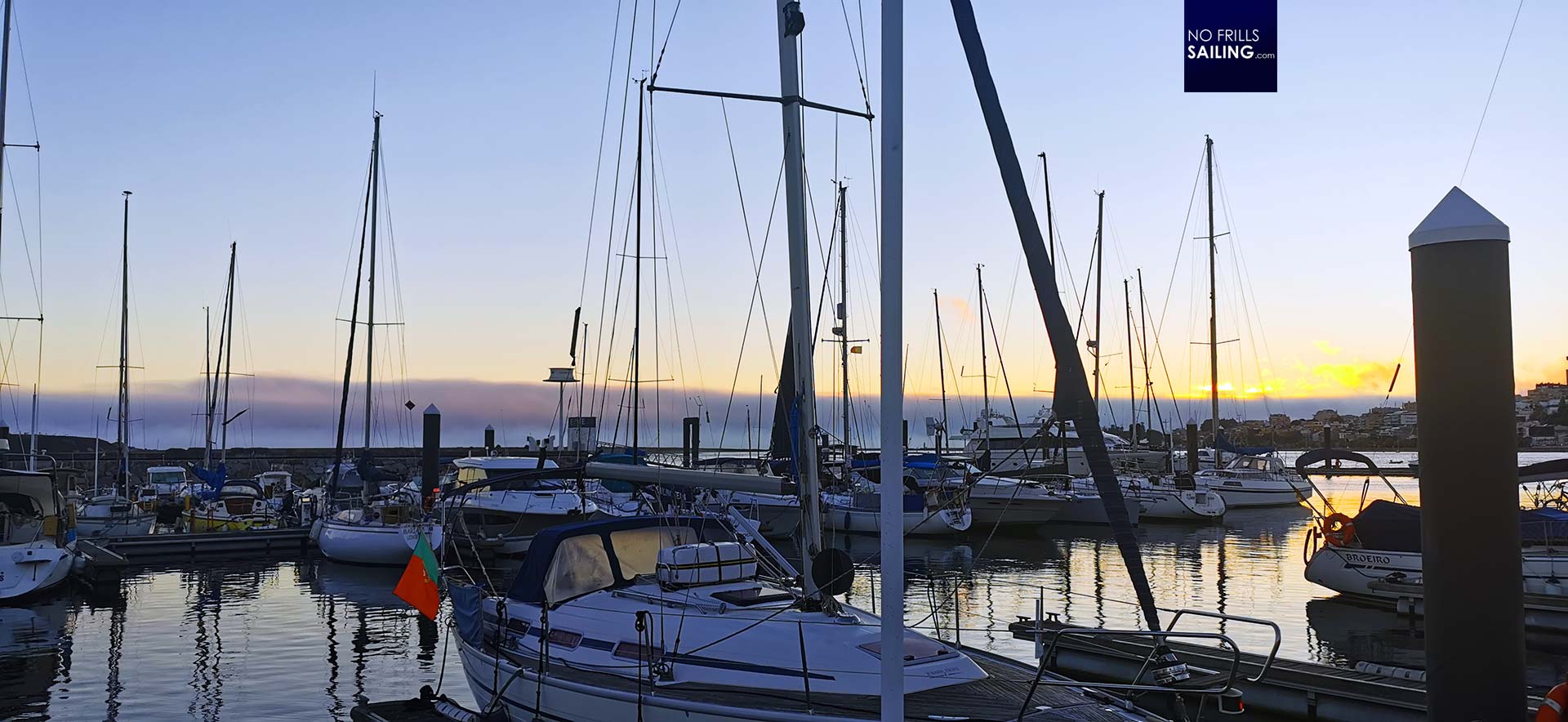
But, as it is often the case with strong meteorological conditions, they come quickly and sometimes also disappear the same quick way. The clouds flying by over the Ocean seemed to get thinner by the hour and I regularly checked the phone for changes in the pattern. And here we are: As we could clearly see, the forecast was offering a short timeframe of less than 20 hours in which the Nortada would be collapsing and not be blowing, no cape effect around the northwestern edge of the Iberian Peninsula as well: “Let´s check for the tides and use this opportunity!”, I suggested to Wilfried and he agreed: After clearing tidal information we identified the midnight hour to be the first possible moment for a safe casting off. Let´s do it!
At last: We´re casting off!
Now, as much as we all welcomed the prospect of going out to sea, as much we all hated to get up in the middle of the night as well. I prepared a string coffee and we munched a bunch of sweet sugar-rich snacks, but tiredness was in our faces still when Wilfried fired the engine and we untied the boat from the Porto pontoon. Finally, our trip through the Gulf od Biscay was about to begin.
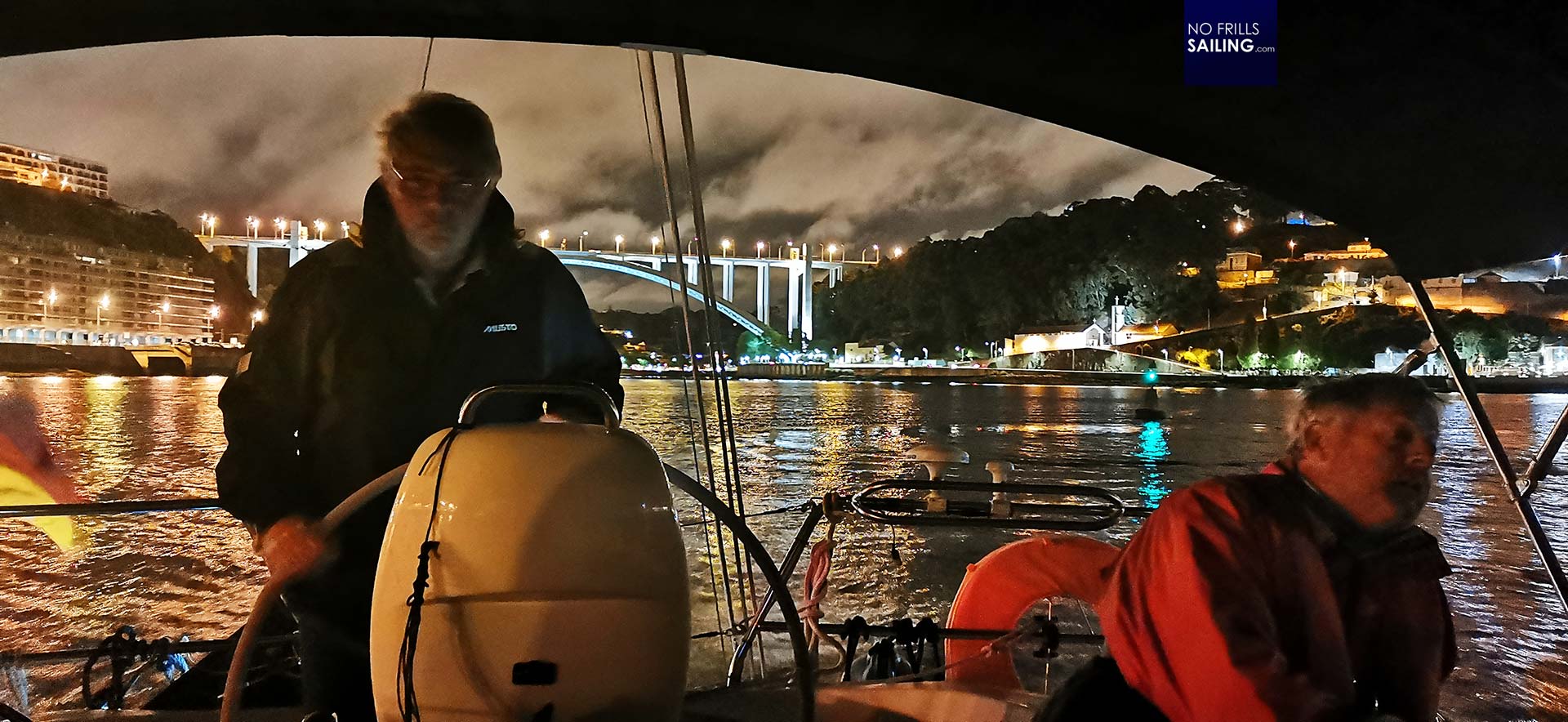
It was a pretty fresh but still lush night that night. Douro River bears a fairly strong current anyways which was now doubled by the receding waters due to a falling tide. Combined with a narrow waterway and the darkness of the night, our Skipper was very focused in bringing out the boat safely. We have been the only boat possibly noticing the weather-window of opportunity as we wouldn´t meet any other craft that night. We took in the lines and the fenders, rigged the boat for offshore travel.
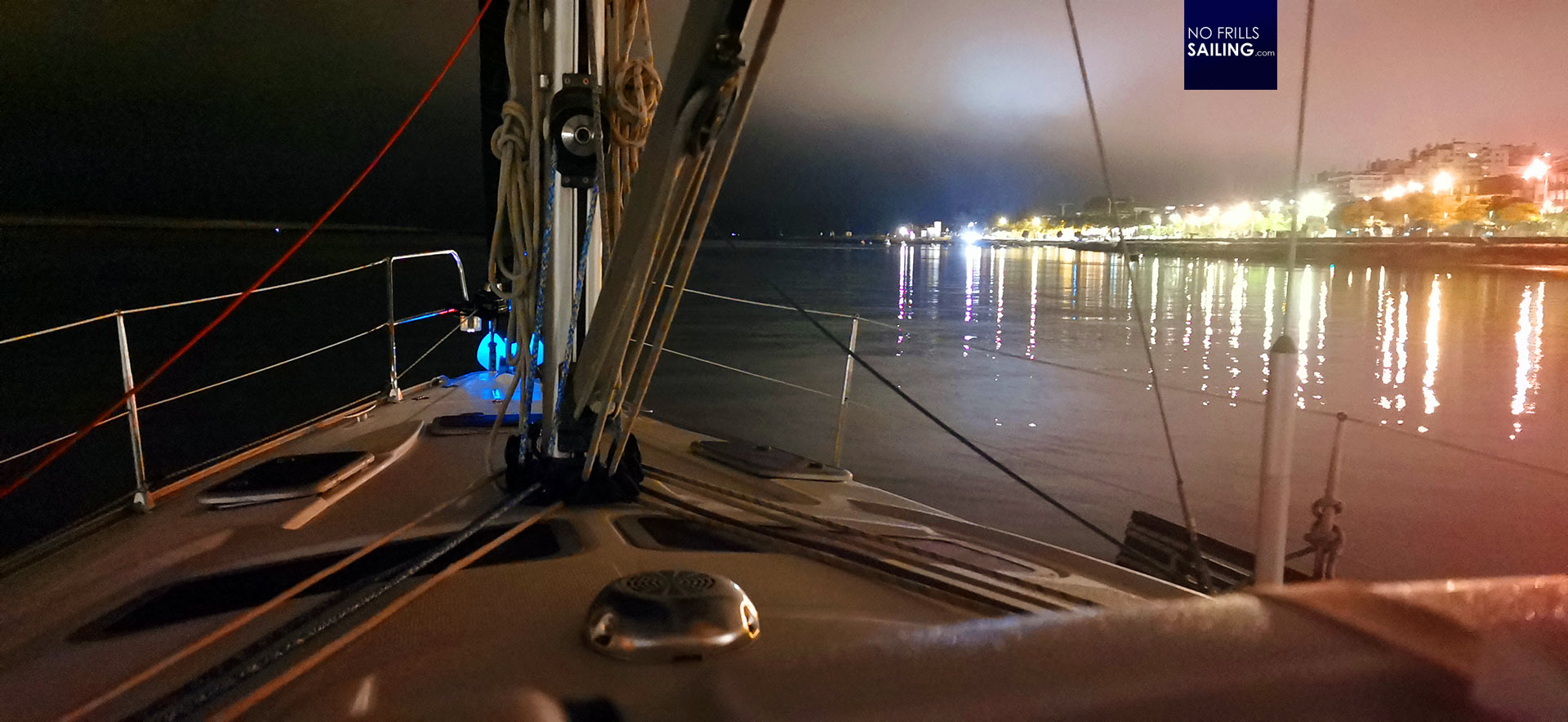
All we were thinking of at that point was if the weather forecast was right or not: Again, if Nortada would re-appear or the time it was down wasn´t enough for the high waves to calm down, our Bavaria with 30 hp wouldn´t be able to crawl up North against the mighty currents and waves. I also had calculated that sailing out into the west and then turn north – circumventing the Nortada and the cape effect – would cost as much as 400 miles detour. A time frame of 4 to 5 days: Not feasible.
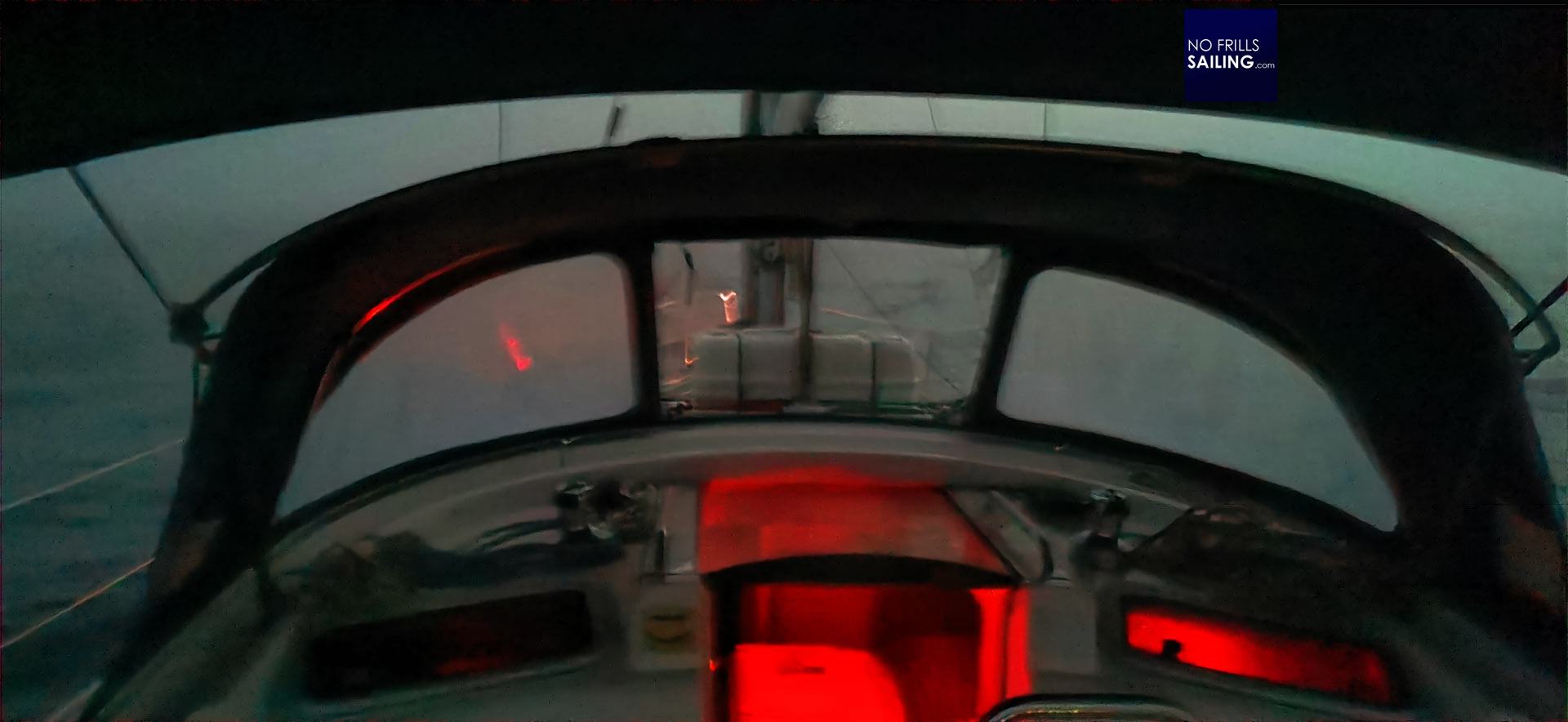
„Ah, nice“, I stated as we had cleared Douro estuary and set course to North: “Fog!”. Well, some things work, some not. The Nortada was actually down as predicted and apart from a weak headwind of 5 to 8 knots we didn´t notice any remainders of this mighty wind. Also, waves were down for the most part so that our boat had no problem in achieving her cruising speed of 5 to 5.5 knots over ground at 2.100 rpm. The moist, cold air masses still coming from the Atlantic Ocean met the dry, hot air over the landmass of Portugal, making the water condensate and creating a corridor of thick fog – which we must traverse no matter what.
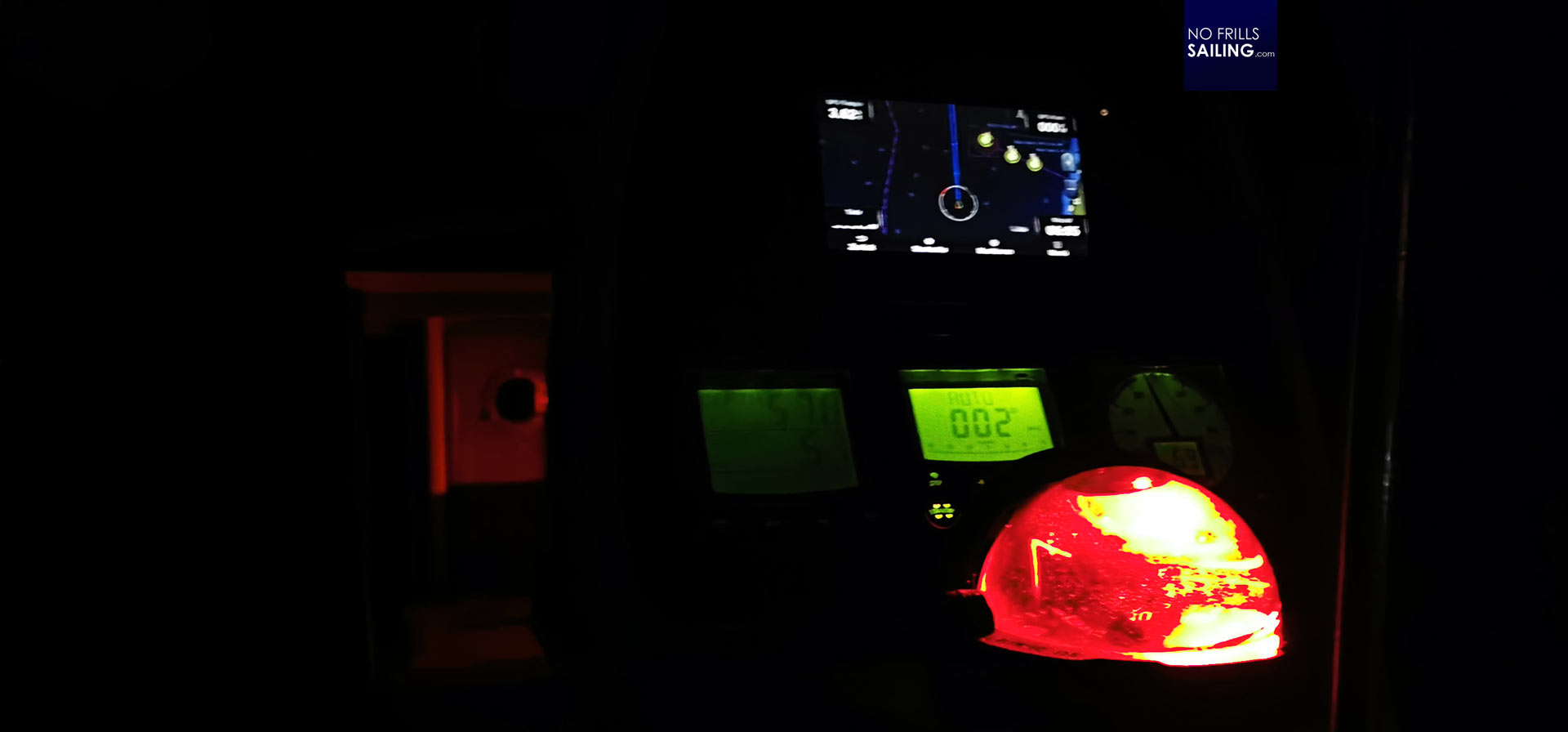
As I assumed control over the boat with Wilfried and Markus going down below to take a nap, I made sure that we cleared the coastline with a distance of not under 5 miles because I assumed that fishermen (which we could see on the AIS, but not their nets and buoys) would be active near the coast. Other than the constant lookout in front of the boat into the big white nothingness and checking the plotter for AIS-signals, the watch was boring. No stars, no nothing.
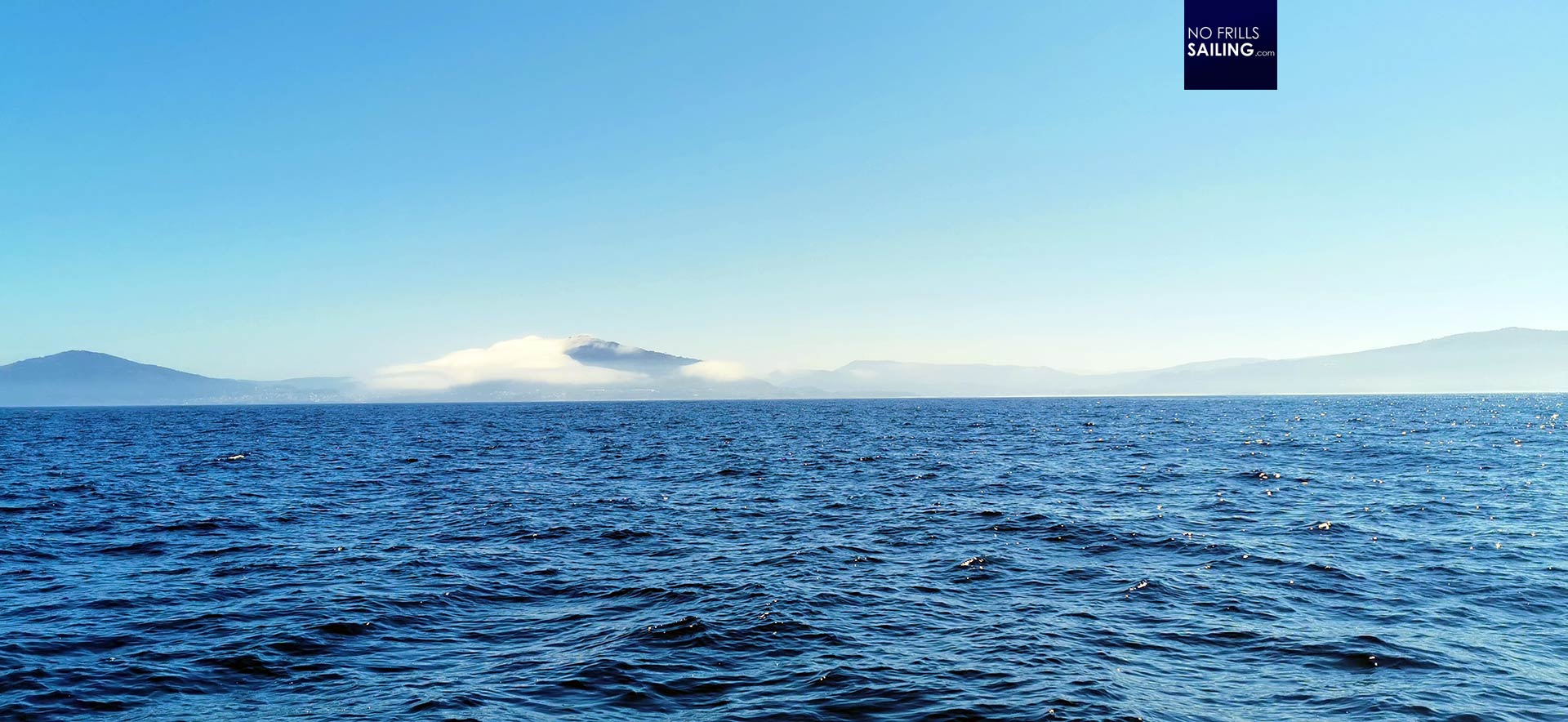
After my watch and taking a nap too I re-appeared in the cockpit the next day. Mrs. Morningsun was successful in ousting the fog and so I enjoyed a clear blue sky and the warmth of the sun. Sailing and being out in a boat means spending lots of time contemplating nature. And more specifically, contemplating weather pattern. Very interesting to watch moist air masses running up against hills and mountains at the coast, condensating and forming local patches of thick fog, possibly rainfall. You watch, you guess, you watch again and you learn.
Calculations
It was midday the second day at sea when I found Wilfried in a tense, possibly stressed mood. Asking what might be the reason, he told me that Diesel consumption – as usual – worries him. “FREE WILLY has been motoring all the way up to Porto from Almeria”, he told me. All the way from Almeria, passing Gibraltar Strait up to Porto, that´s some 620 miles! So apparently, Wilfried knows a whole lot more about consumption and range of his boat under engine. We had been travelling by Diesel for roughly 12 hours at that moment and that was what was worrying him: Will the fuel be enough? “Well, of course not”, I assumed, “We´d have to re-fuel as a matter of fact.”
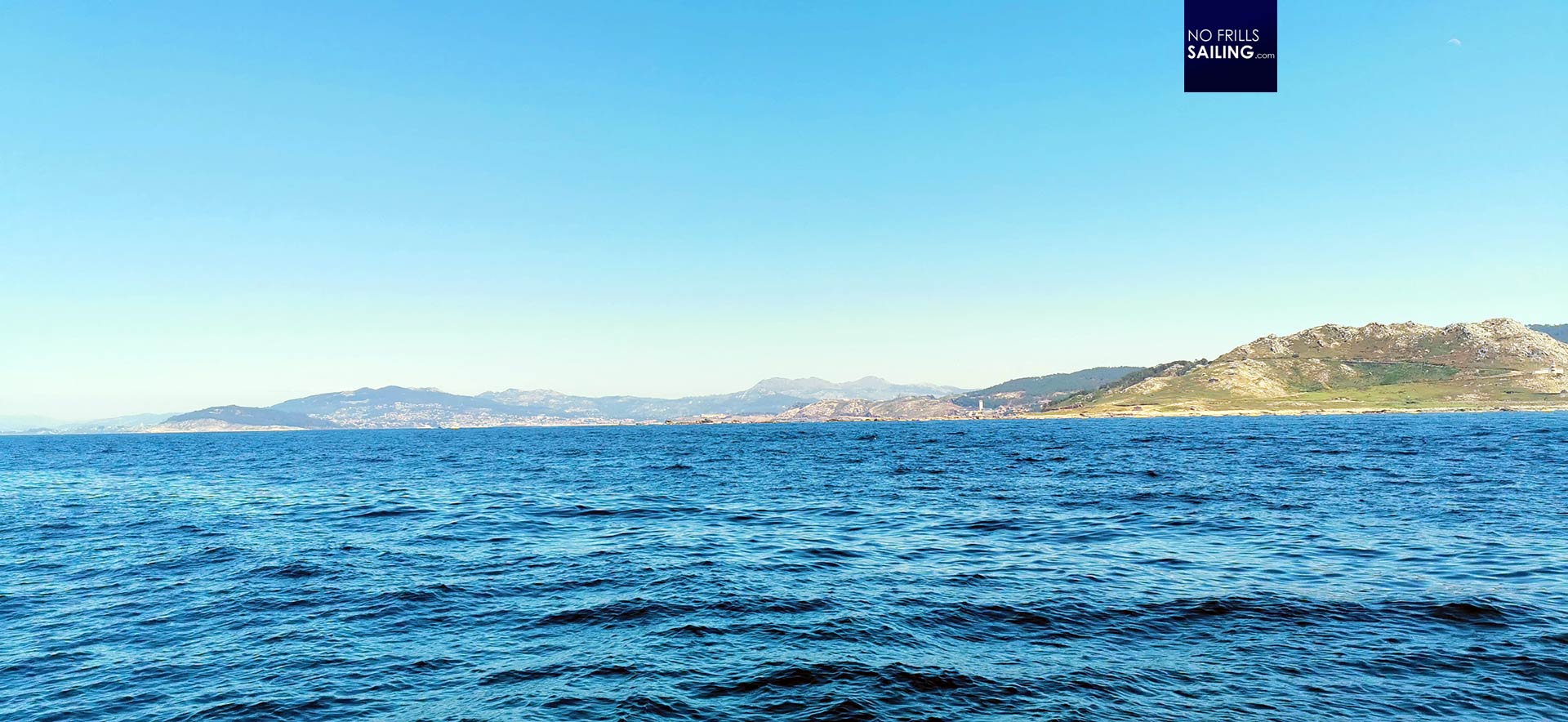
The equation is fairly simple: As we decided to go to Vigo, a Spanish harbor some 70 miles north of Porto, the boat will have been travelling by engine for 19 hours straight. That time frame, given a consumption of 3 litres per hour, meant that 55 to 60 litres would have been burned right away. No question that replenishing the ressources was not just logical, but also good seamanship.
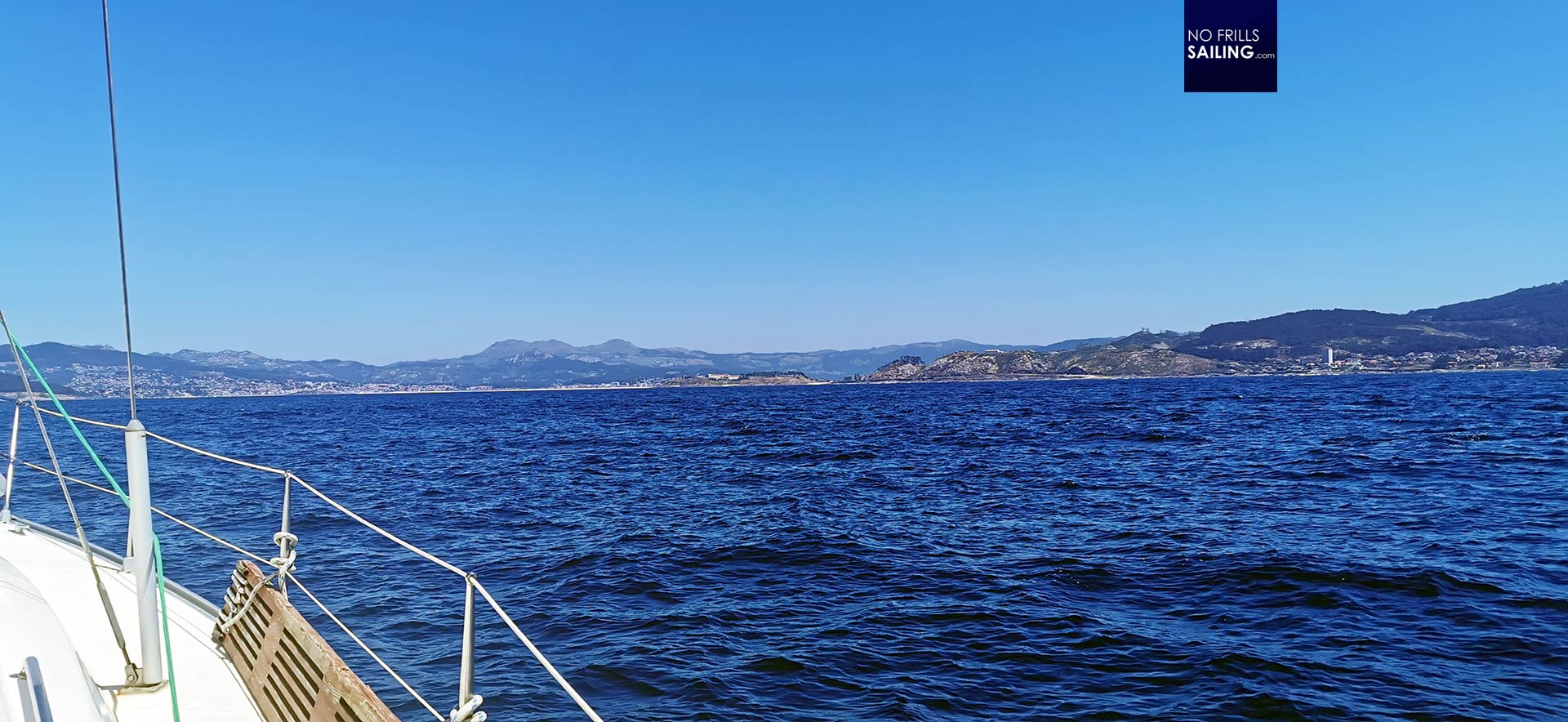
I checked the charts and suggested to skip Vigo and go to Baiona instead. “This would safe 10 miles in and out – 20 miles in total.” Skipper agreed and so we sailed into Baiona. I must say, the unnerving refuelling-stops are, the thankful I am for them in the long run. The northern coastline of Portugal, more so of Spain, is very different from the southern part. It´s rough, rugged and blessed with sharp, deep inlets, called “Ria”. These Rias can be described as mini-versions of the mighty Norwegian Fjords and they are reckoned by insiders as tips and must-sees. Vigo is of course a huge maritime town with a full-fledged harbor, but there are plenty of Rias up north where you wouldn´t find many people – especially not the hordes of tourists – and are able to experience a rather outstanding, kind of disconnected, pristine life of people in smaller coastal towns. Going into Baiona harbor was a good foretaste to these Rias.
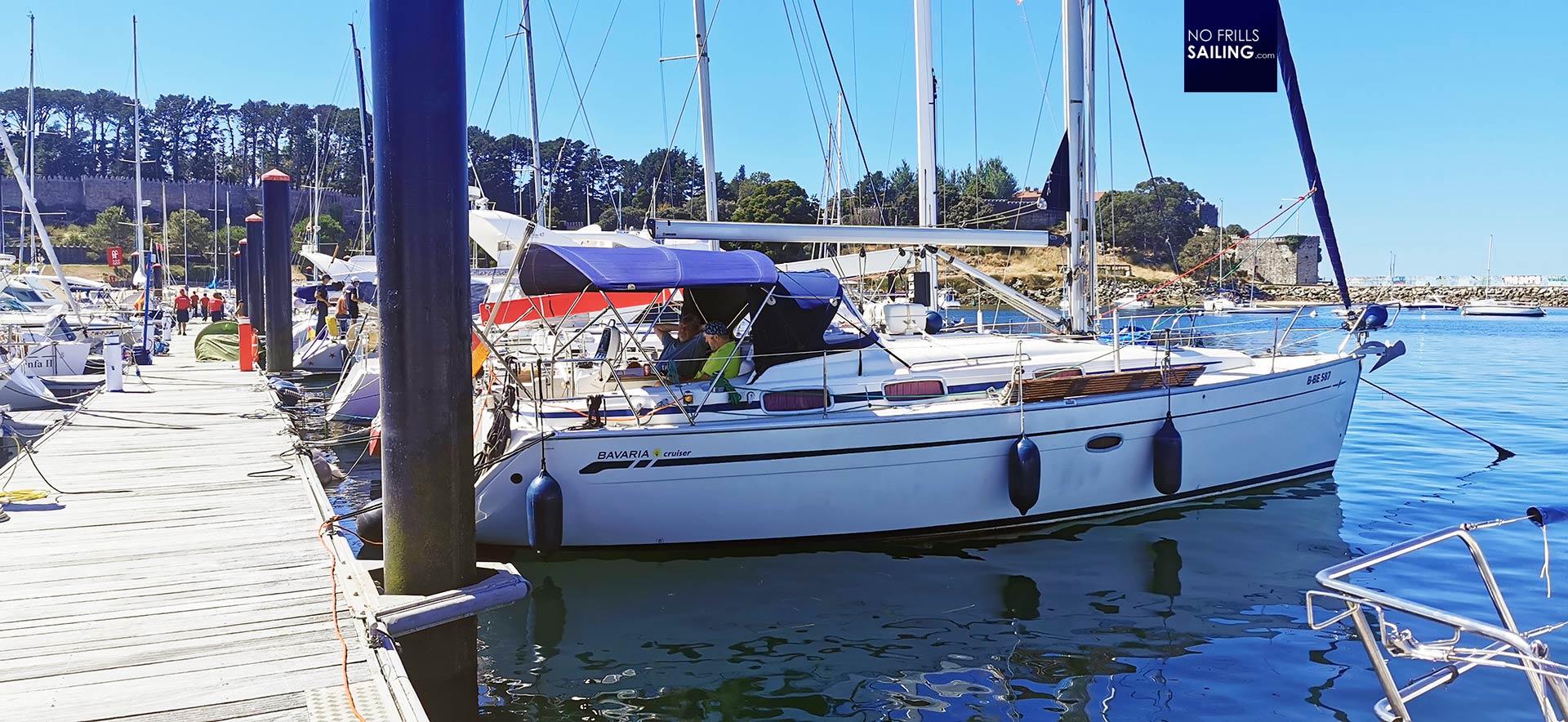
We decided to go to Baiona Sailing Club. Registering via VHF radio after refuelling, very friendly Marineros helped landing the boat safely. We filled in the mandatory form and the guys invited us to enjoy the amenities of the club. That said, the crew immediately went straight to the showers whereas I remained aboard to check this first day. Rather unspectacular to be honest: 19 hours of travel time, 70 miles made good north. Nothing special happened, except for a mild sunburn on my nose.
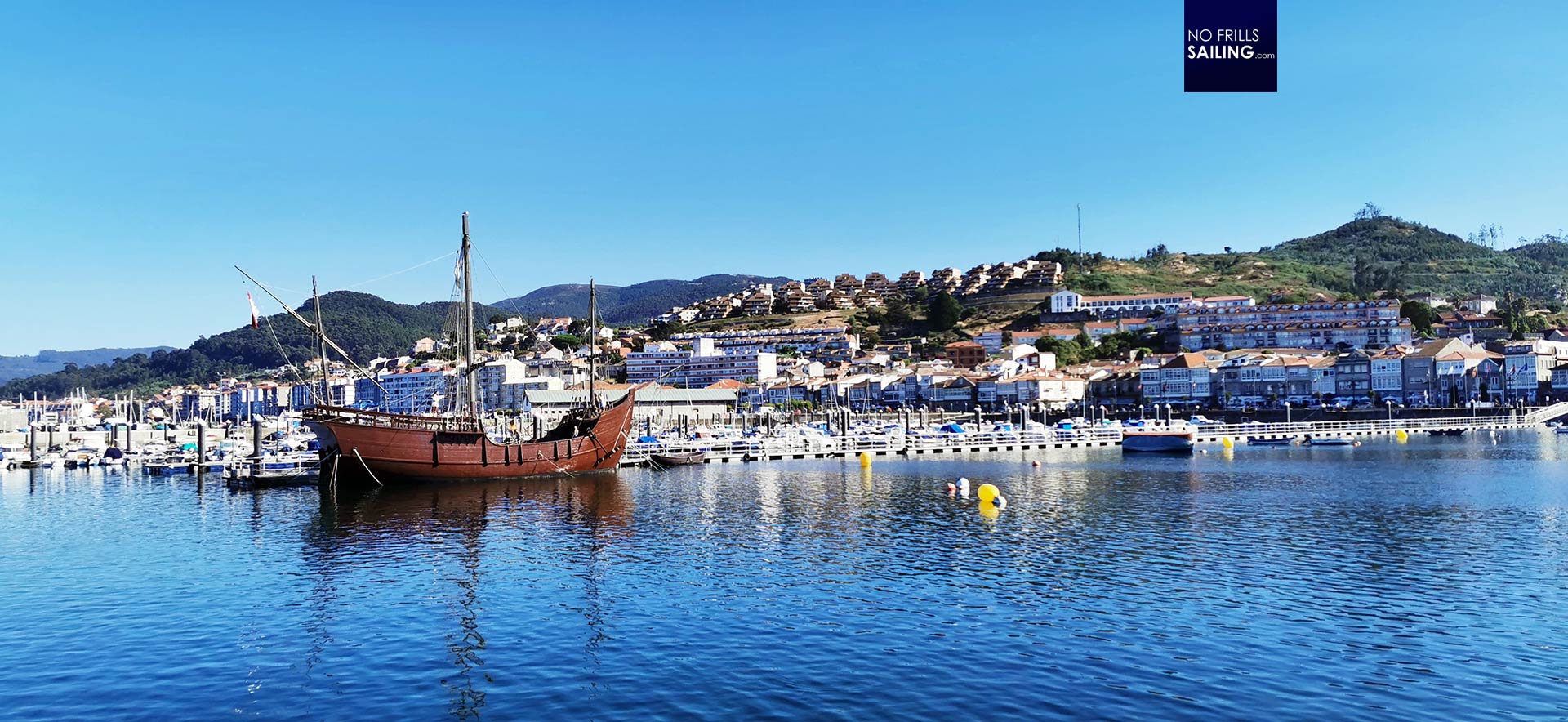
I admire the Bay of Baiona by standing on the jetty. It´s a small coastal town in the vicinity of Vigo. A load of pontoons, two marinas, a fort – once protecting Vigo bay for sure, now home to the sailing club – and a nice, sandy beach full of people enjoying the sun. As Spain was hit hard by Covid-19 pandemic, harsh regulations were still in place, such as wearing a mask at all time outside. Not a very nice prospect wearing this thing with temperatures reaching 30 degrees Celsius, so I skipped the idea of going into town and further exploring Baiona. Instead, we relaxed after some 19 hours unnerving Diesel-noise and enjoyed a beer aboard.
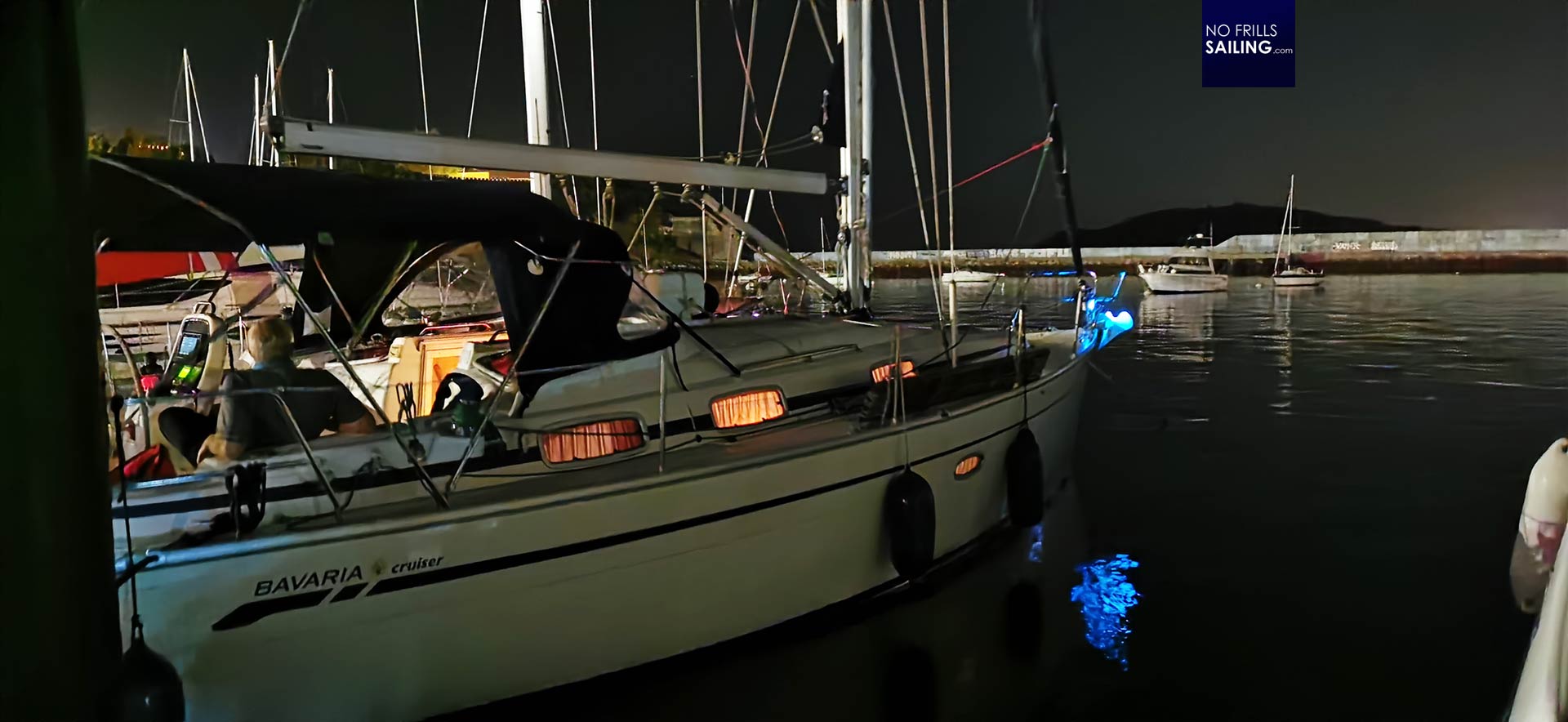
But we were not here to stay longer. Another falling tide was to occur at 0200 in the morning next day so, again, it was time to take a nap and getting up at 0100 for a strong coffee. We cleared the boat and readied ourselves and again casted off at 0200 from Baiona. It was a short but nevertheless formative visit: „One must come back to explore these Rias!”, Wilfried stated and regretted the fact that there was so little time to stay here in this area. I take a note to myself, adding these northern Spanish Rias to the list of must-sees.
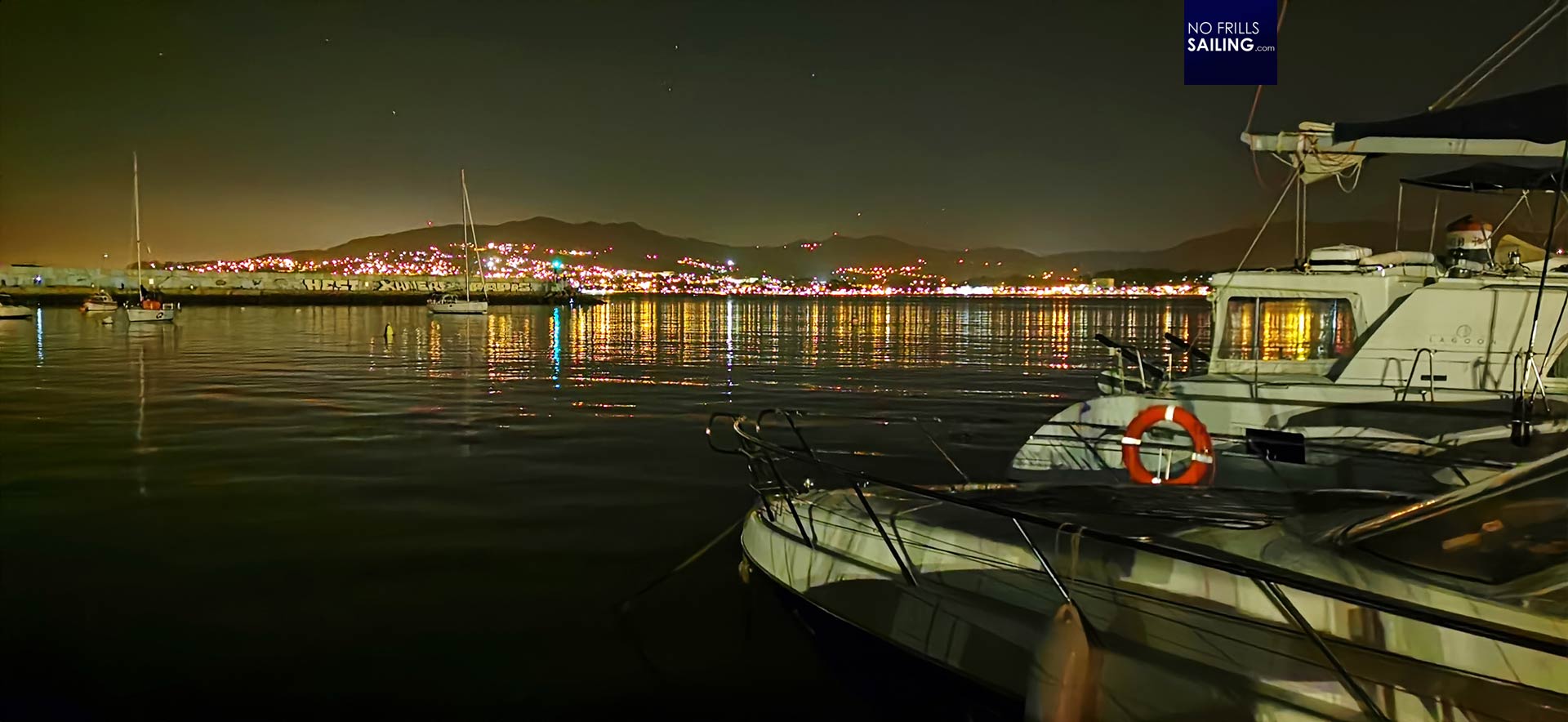
As we slipped out of the large bay I looked back onto a brightly lit Vigo: I instantly got remined of my all-time favourite movie, “Das Boot”. The German Uboat, after being re-located and advised to go to the Mediterranean, is as well refuelling and restocking supplies in Vigo. The come at night – wo go at night. I take some pictures and send a short film to my sailing friend and “Das Boot”-actor Martin May with some quotations taken out of the movie. He sends back a smile.
Nightwatch
Some hours into travelling, I again assumed control of the ship during my watch. We have established a system of watches which was going to be in place for the whole duration of the trip. That said, we agreed on a 3-hour shift for each day and night. Meaning, that after a watch of 3 hours “on” one would have 6 hours “off”. The skipper at first tried to have that system imposed just during night time assuming that in daylight we all would be awake and somehow somebody would take over command, but as it turned out, that was impractical.
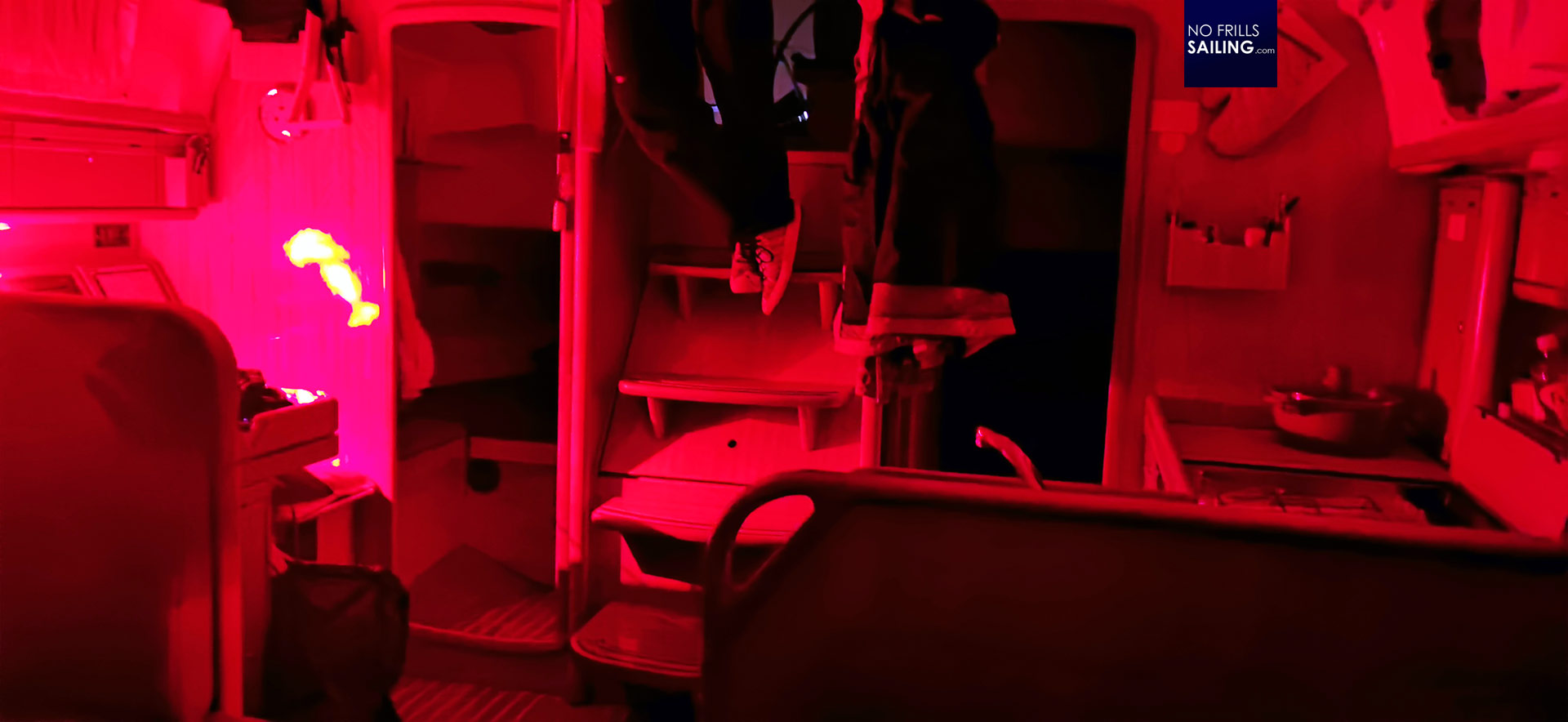
So, our 4 shifts á 3 hours on was introduced and I must say that it was the most perfect balance between time awake and in charge and time for free usage, sleep and recovering. Yes, we all met during daylight in the cockpit, but it was good to have one dedicated watch commander for all times of the day, 24 hours. Of course, while under engine, there wasn´t much to do: Course set due North, keeping a distance of minimum 5 miles to the shore and having an eye on AIS contacts. That´s it.
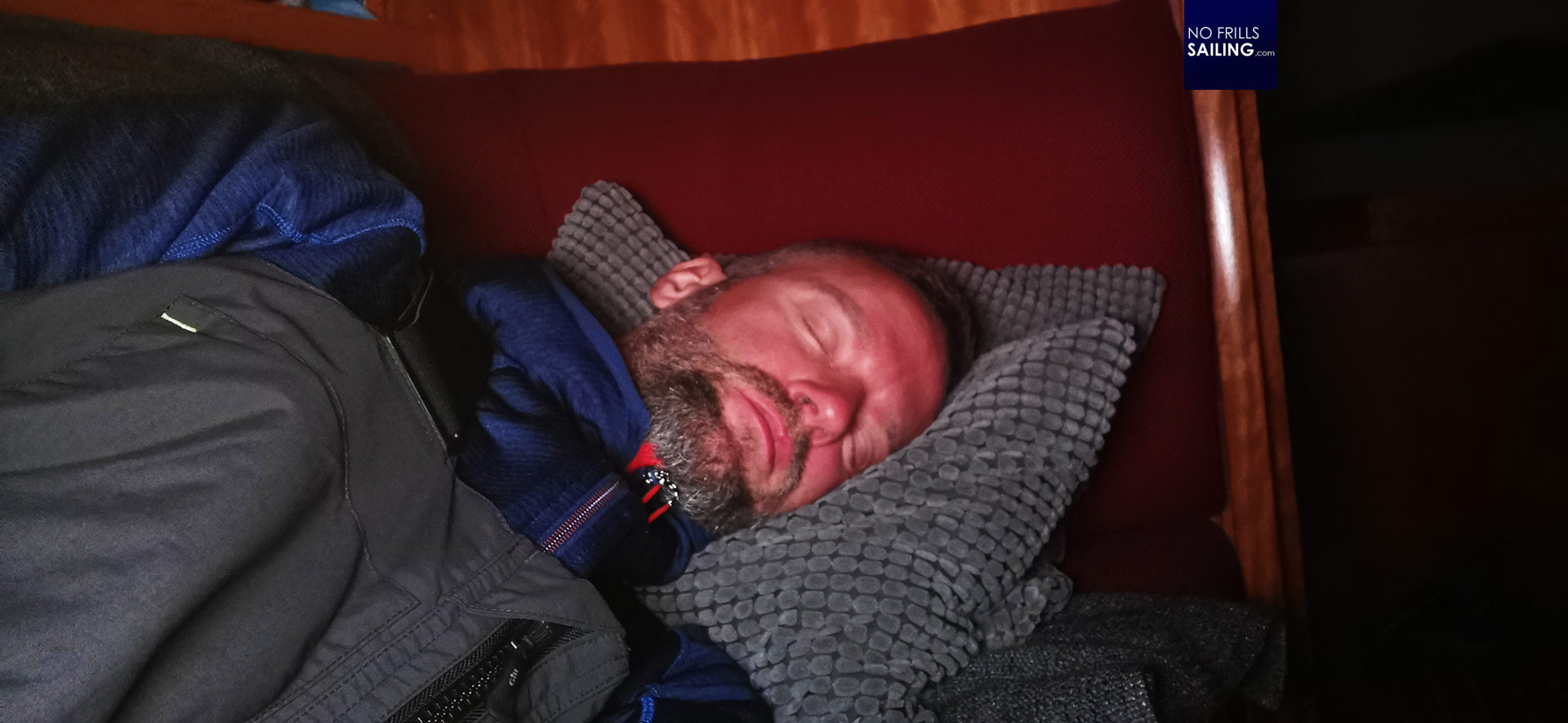
Of course, night watches are the harder ones. Due to the natural bio-rhythm of one´s body, the desire to sleep is far bigger than in broad daylight. The hours from 0100 to 0300 and more so the “dog´s watch” from 0300 to 0600 had been the hardest. Constant yawning and heavy eye lids made the hard, often moist cockpit benches tempting makeshift beds where we often would lay down and close the eyes for some minutes. But duty and responsibility called on station soon. What a bliss when the watch was finally over and I could sneak into my sleeping bag, put in the ear plugs and finally find some rest – right next to the noisily humming engine …
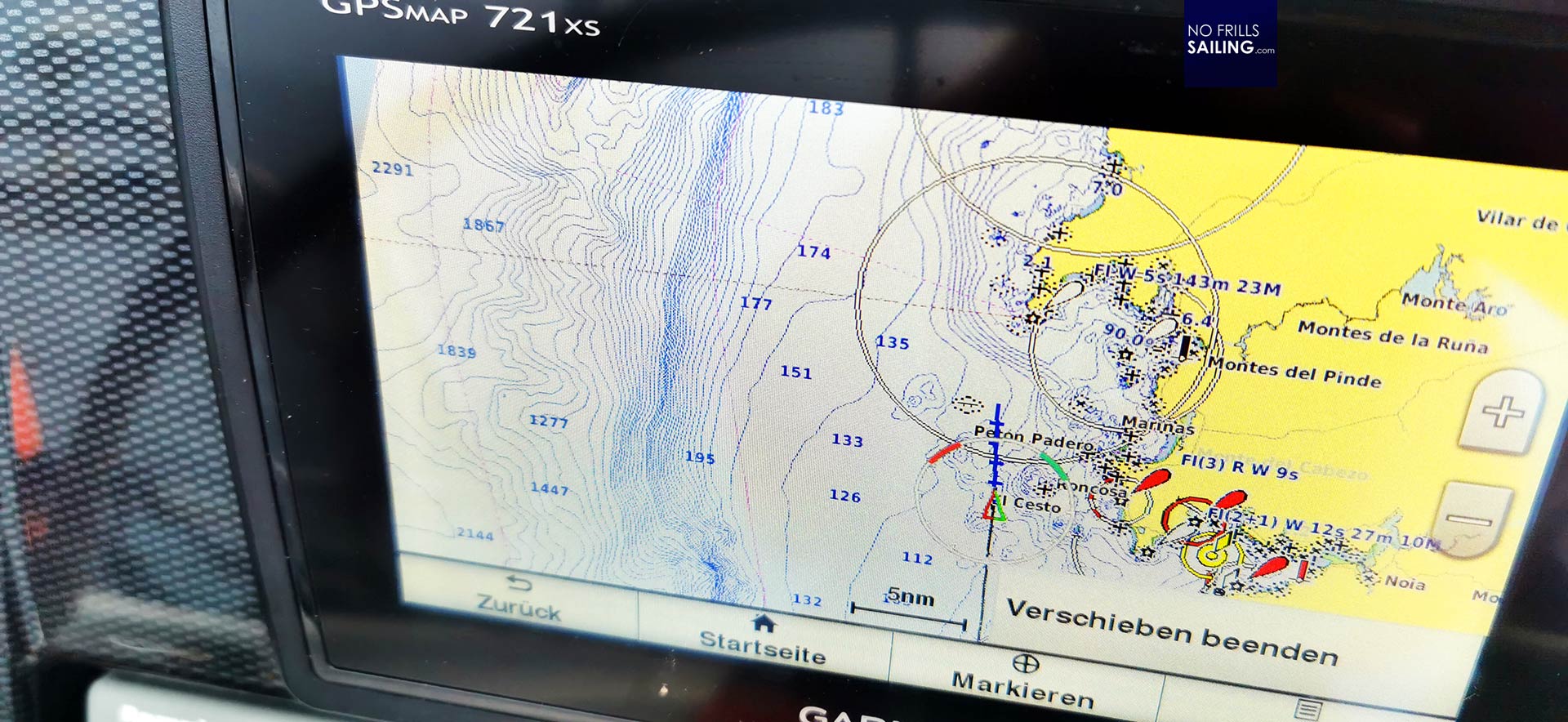
After a handful hours the next morning – again covered in thick fog – we arrived at Cape Finisterre. Derived from the latin “finis” for „the end“ and „terra” for “the Earth” this cape was often regarded as the end of the world for the Europeans. Of course, Portuguese Cabo da Roca is the real most westerly location of continental Europe, nevertheless, Cape Finisterre was a milestone on our journey as it marked nearly the last waypoint before the open Gulf of Biscay would be arrived.
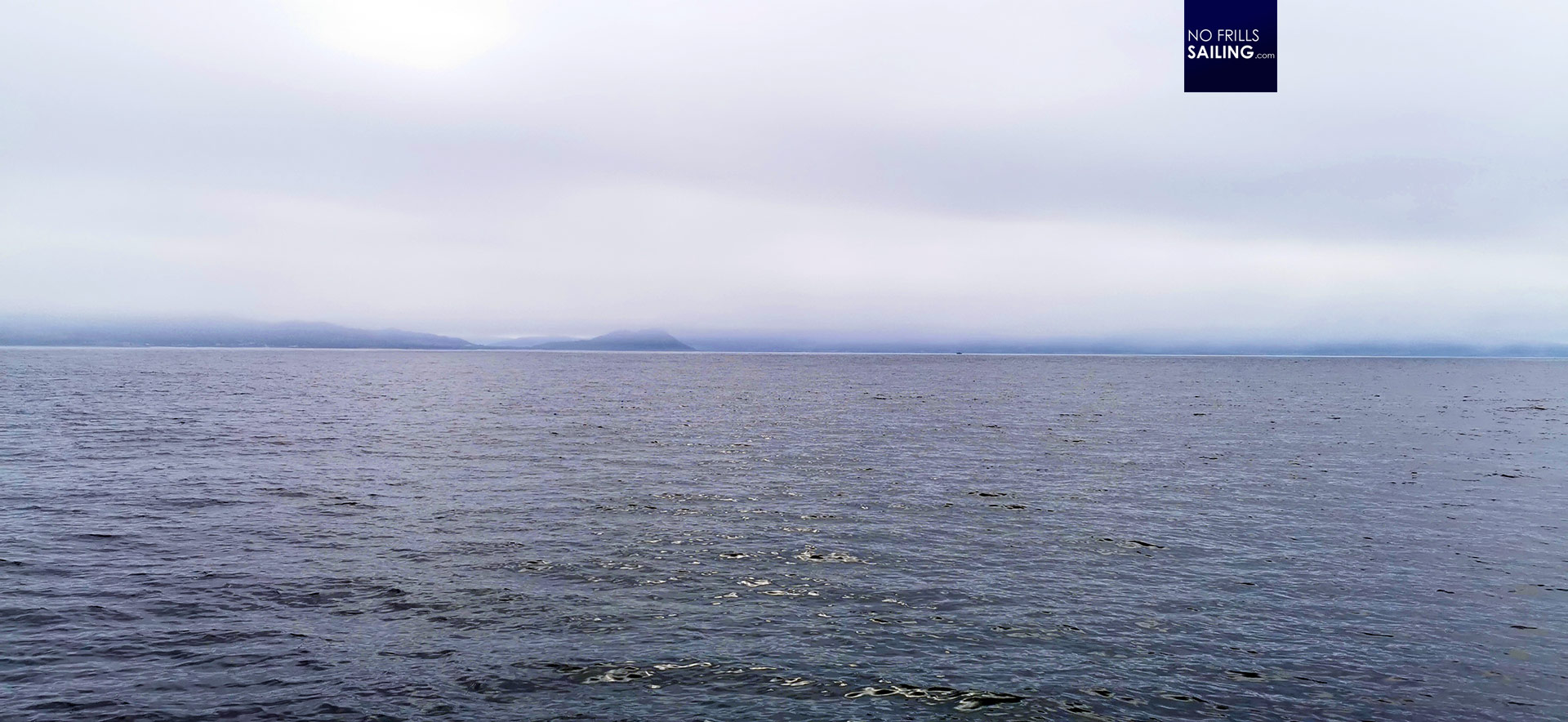
Again we had been travellking for 15 hours now since leaving Baiona and haven´t set sails once let alone sailed for a single mile. Skipper Wilfried was grumpy again: “We cannot go under engine the whole time, we simply won´t make it through the Biscay that way!” We knew perfectly well: With a total contents of 150 litres of Diesel the boat can go by engine for some 50 hours. Which makes a maximum range of 250 miles. Shortest distance through the Gulf of Biscay between northwest Spain and northwest France would be some 350 miles. So, not taking any drift of currents into account, the boat must be sailing otherwise the crossing cannot be done.
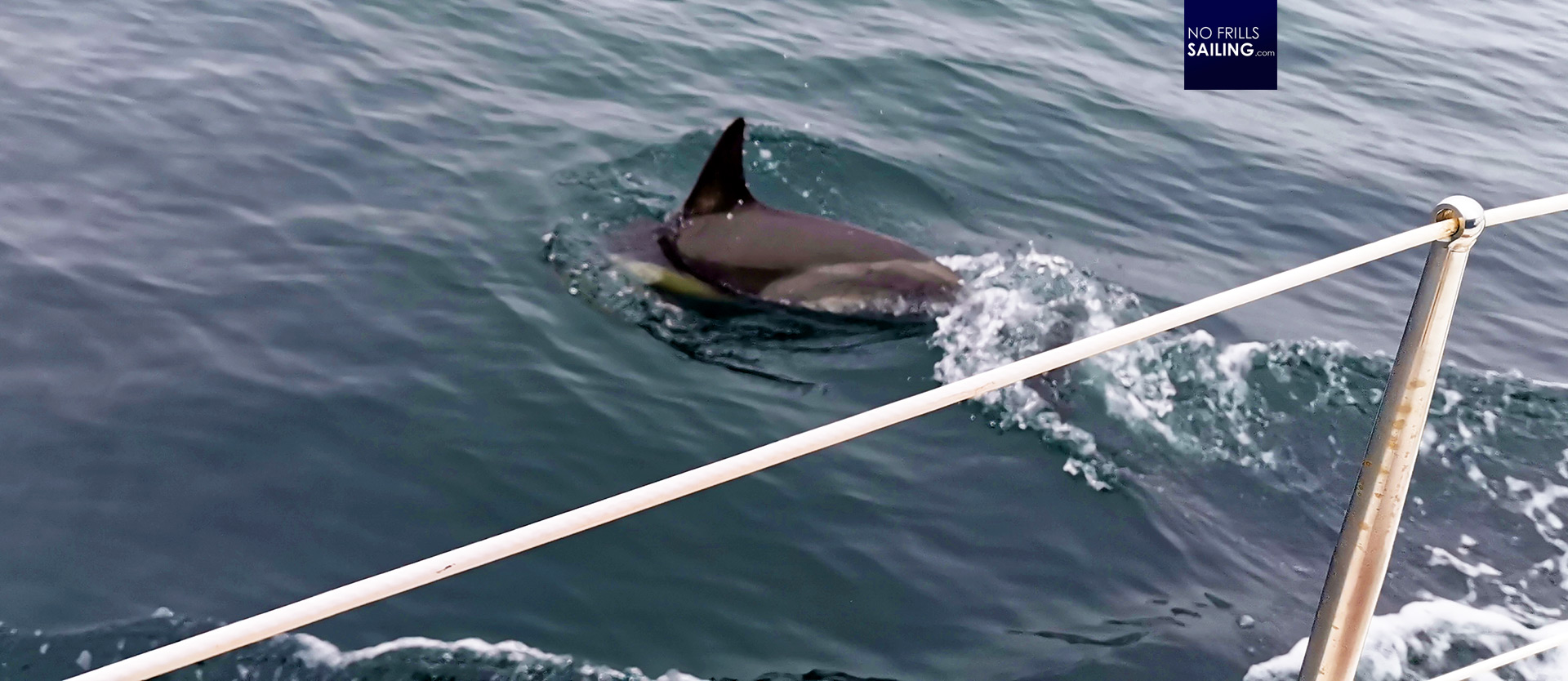
So, again I researched the charts and other than going to A Coruna, which was the plan beforehand, I suggested another alternative: Given the fact that our Weather-window of opportunity was closing with a string Northerly returning, creating the cape effect and the Nortada again, I dissuaded the skipper from going to Coruna. “Instead we should do another – last – refuelling stopover here … in Muxia. And then head out as quickly as possible to get some distance between us and the Spanish mainland.” My assumption was that the farther out we would be, the less intensive the incoming Northerly would be. “That´s roughly 20 hours of northerly winds and then a shift to the East: In these conditions we can sail.” Skipper again agreed – to our regrets, we would neither see A Coruna as well, a spot I was very keen on visiting in the first place. But, that´s sailing.
Last stopover: Muxia, Spain
We laid rudder starboard to enter Baixo Figuera and turned our bow into the rough Ria. At least we got another chance to visit one of these, I thought. Accompanied by the last bit of fog, it was a kind of unreal atmosphere, more reminding of Cape Horn or a far northern town at the Northwest-Passage rather than being in hot Spain. We stood in awe, excited and fascinated by the surrounding nature – none of use had ever been here, nor did we expect to see such a beautiful, rugged and somehow feyed scenery.
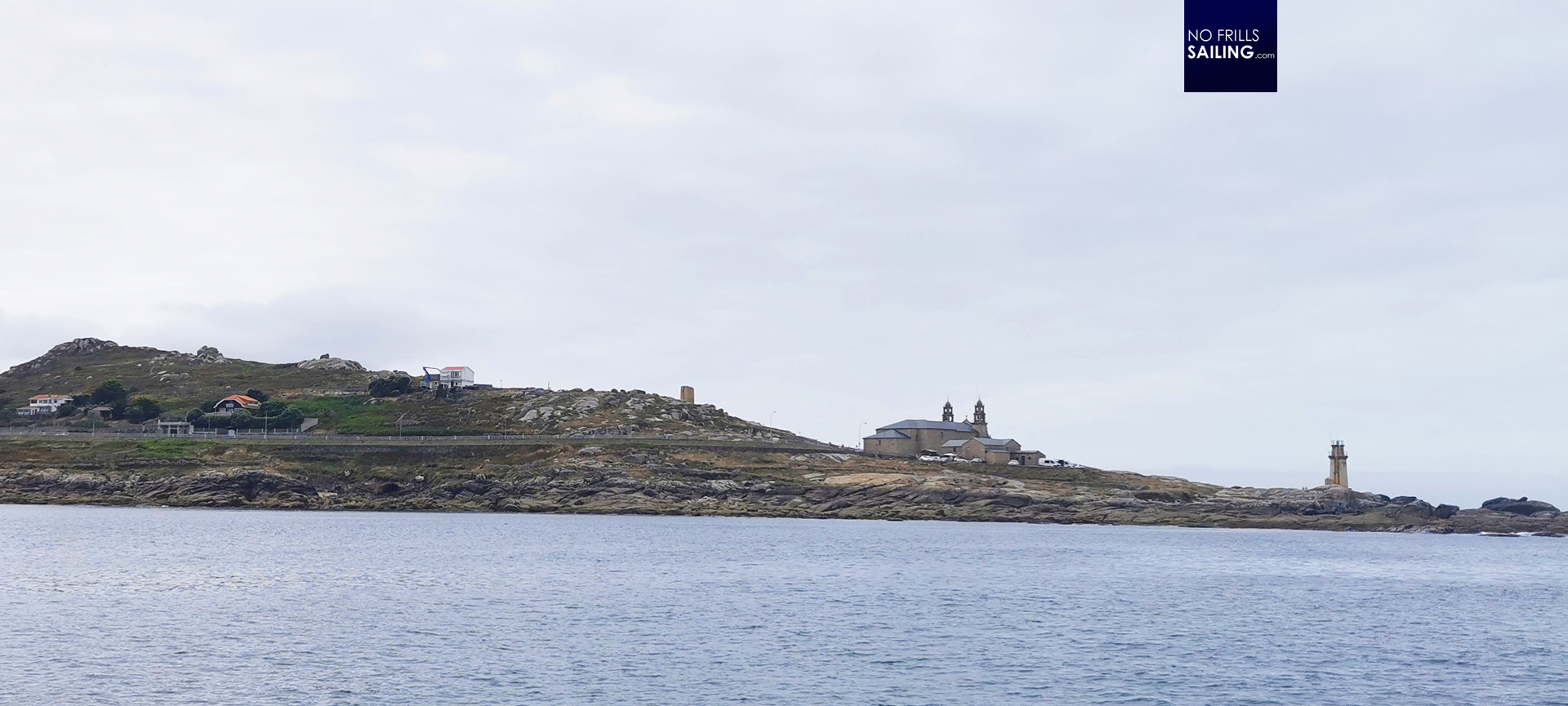
As I later learned, Muxia is indeed a special – if not sacred – place. This town is part of the Camino de Santiago, the most famous Christian pilgrimage. To our starboard side, after the “Faro” – lighthouse – the most sacred Santuario da Virxe da Barca stood proud and humble. This church is a must on every pilgrim´s Road to Santiago and a holy place for Christians. As we entered the marina, we found it mostly empty. Another friendly Marinero appeared and agreed to help with refueling the boat. It felt strange being here but not in a bad way.
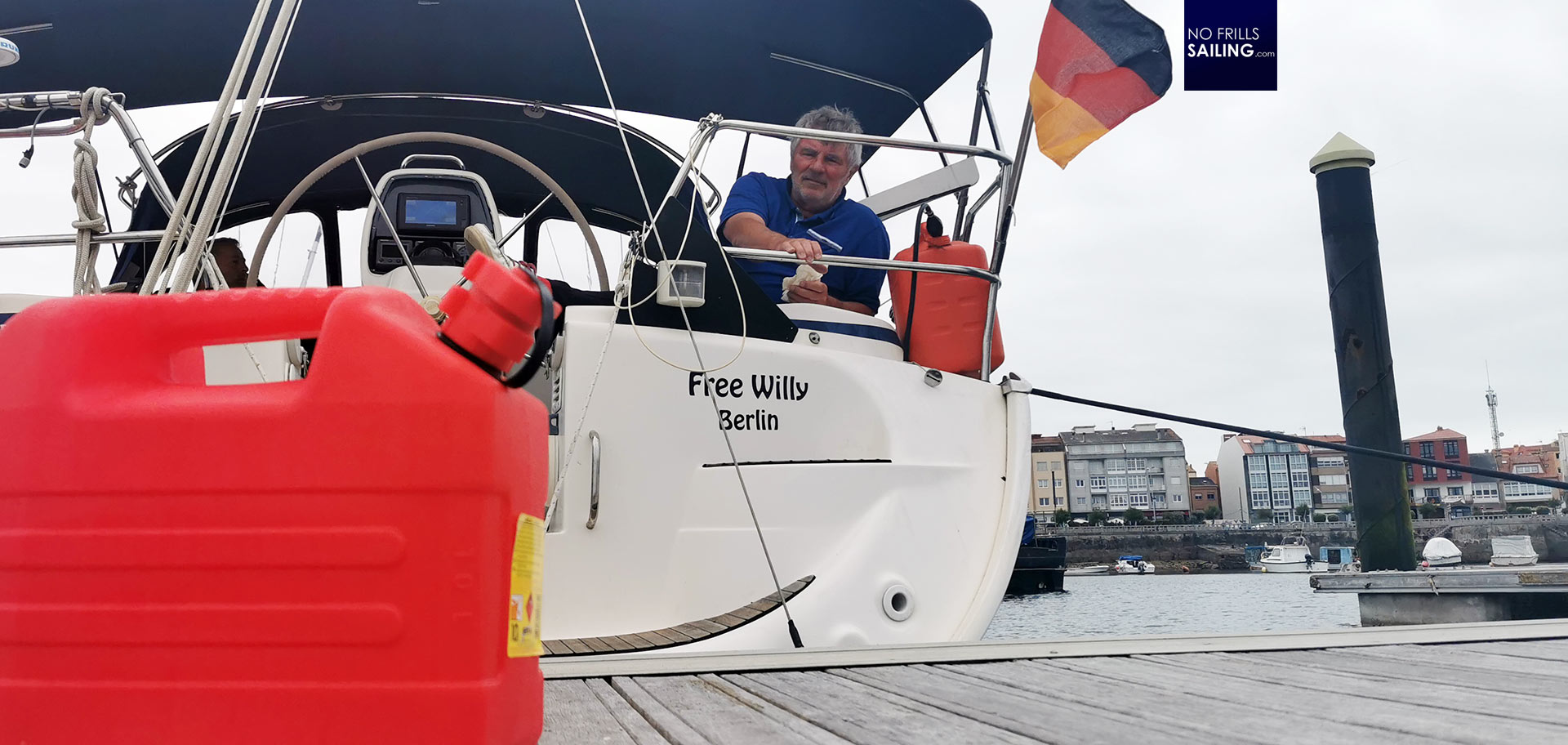
As Muxia is prone to high tides and – well, that´s more the reason I believe – the town is so small, both cars and boats refuel at the same station. That means that you cannot go alongside the petrol pumps but have to carry canisters of fuel to the berth. This is a time consuming and strenuous way of doing it, but well, that´s the last place to get Diesel before entering the wide open Gulf of Biscay.
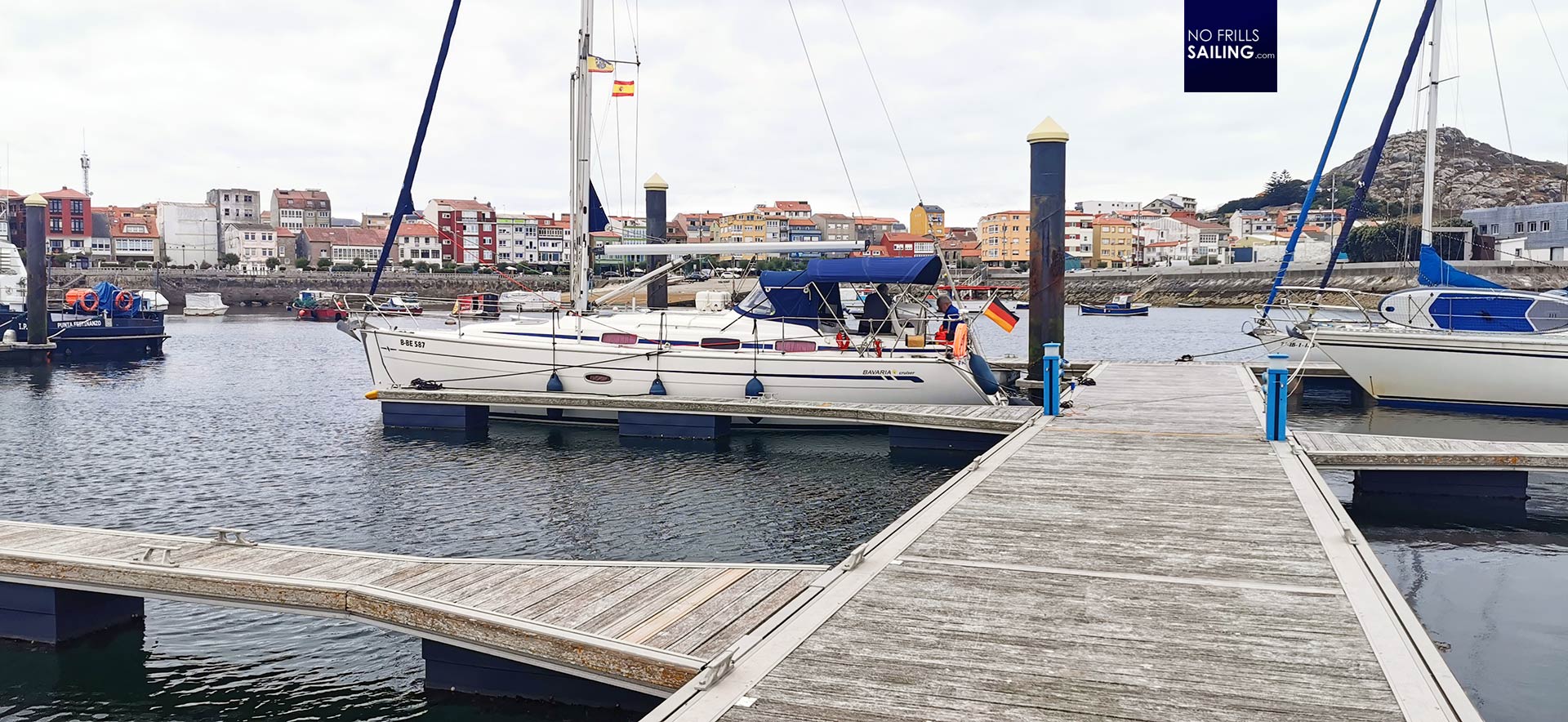
We put Diesel into the main tank until it was filled to the upper marks. We also filled two 20 litre canisters and two 10 litre canisters adding 50 litres to the total of 150 litres. Thus we widened the range from 150 to 330 miles. Still not enough but – as I knew very well at this point – we would have plenty of wind coming up enabling us to sail for the most part. “How strange that is”, Wilfried told me: “Normally you would be in fear of too strong winds and storms in the Biscay – now we fear a total calm.” I smiled and nodded: “We will be sailing, Skippy. For sure …”
Leaving for the open Gulf of Biscay
We didn´t plan to stay in Muxia for all too long because latest forecasts made us rush: Soon winds would be setting in from the North, blowing hard and strong. After a few hours waves would have been building up making headway towards the destination impossible. Every single hour now counted, nevertheless we chose to have a proper dinner at one of the harbour restaurants at first because this would be the last land-based dish for the coming days. So we left at 1900 after just 2 hours in Muxia. Now, the real trip would begin. At least this is what I was hoping for.
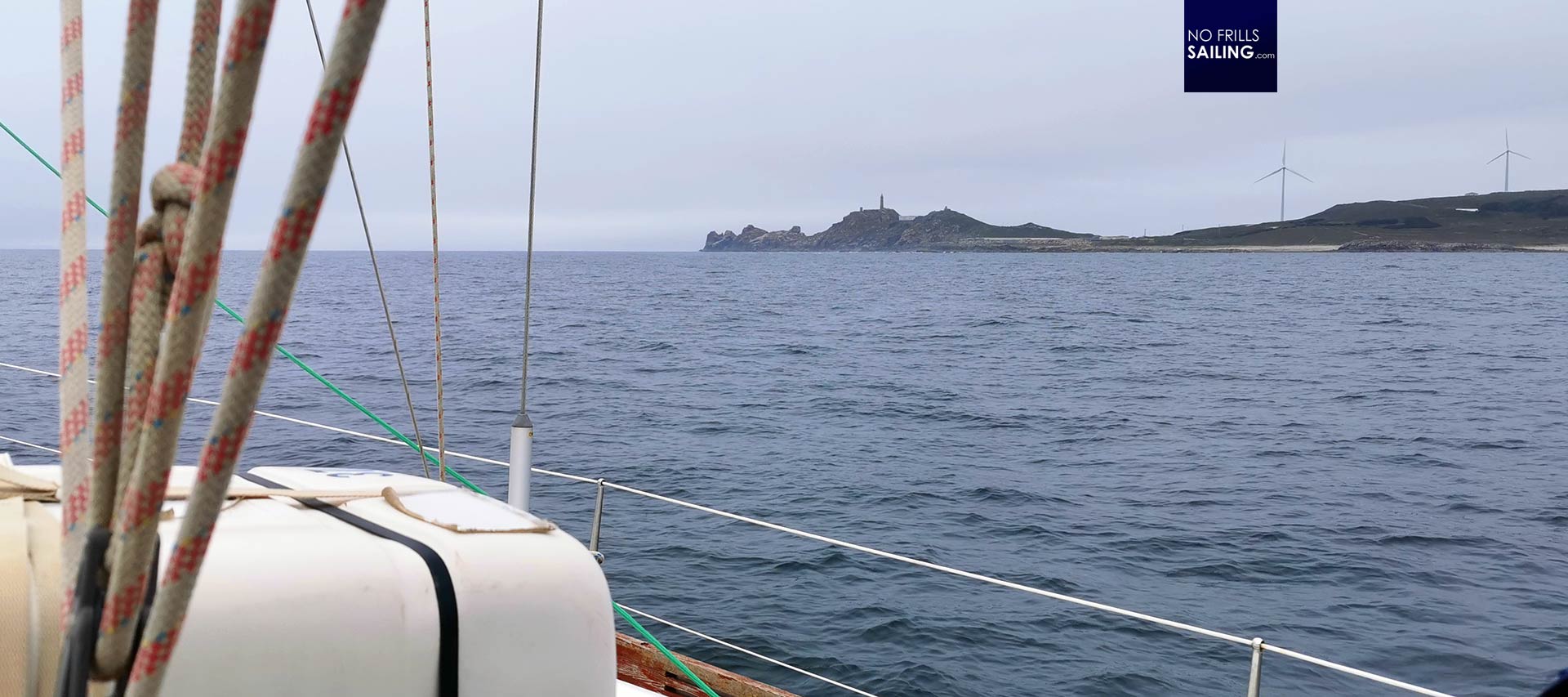
Passing Cabo Vilán to the starboard side, I had some time researching the net. I read that it was this region, especially Muxia, hit the hardest by the grounding and breaking up of the tanker PRESTIGE back in the year 2002. The whole region had been badly affected by the oil spill, killing whole populations of seabirds, taking away the livelihood of the fishermen. Reading about PRESTIGE and the circumstances of her sinking, I was reminded of the very different face this region and the sea could have here: Severe storms, harsh winds, big, big waves.
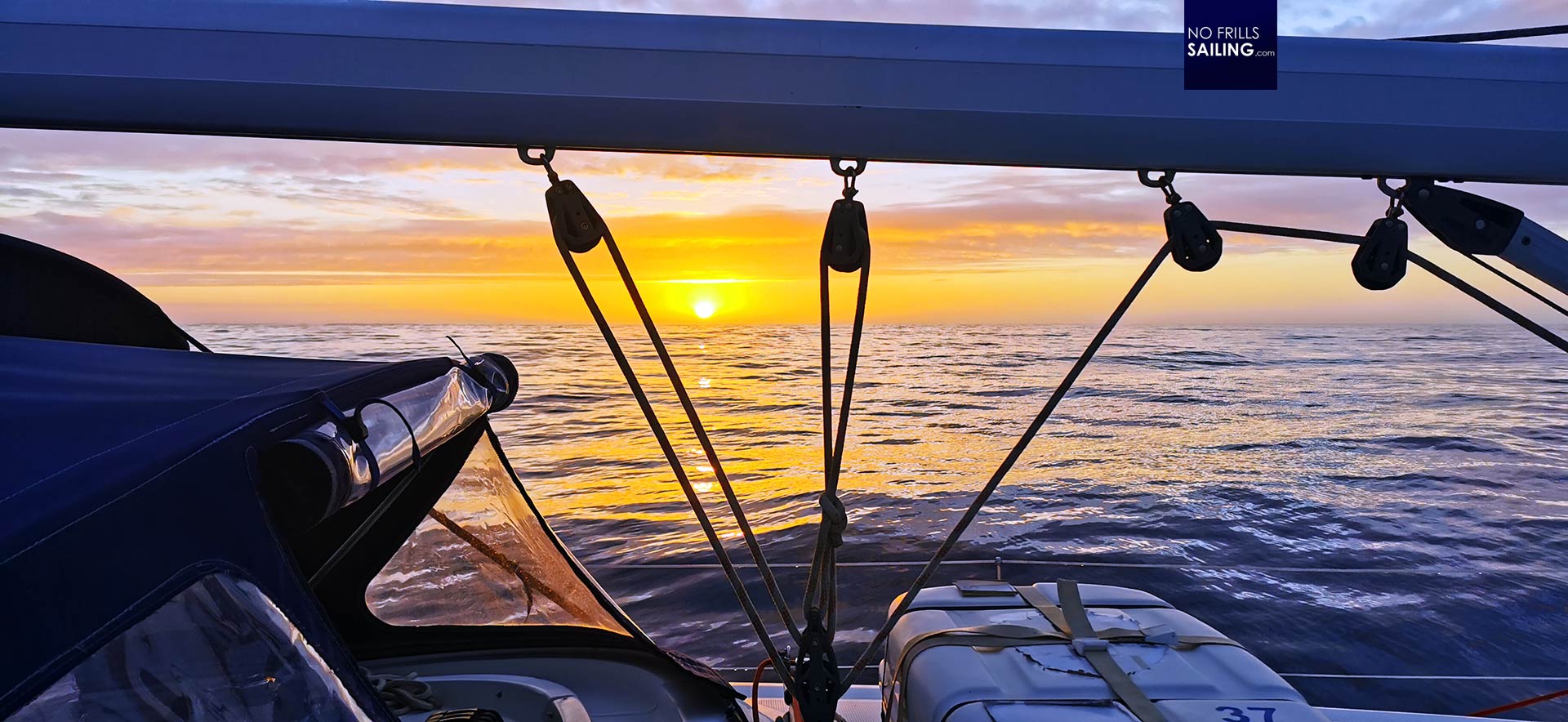
As we sailed around the cape and had the open Biscay gulf in front of us, I just could not believe that normally the sea is boiling here. The whole coastline in this area is called „Costa da Morte” – “Coast of Death” – because a lot of boats have been crushed on the rocks here, pushed against the rocky, knife-sharp cliffs. Still, every year, fishermen die because of huge freak waves which are traversing secretly the Atlantic Ocean and suddenly appear in the shallow waters of the coast, just to bring about destruction and death. But not tonight, I thought, enjoying a wonderful fireworks display of all the colors our Sun can produce when going down. A good omen for the Gulf of Biscay?
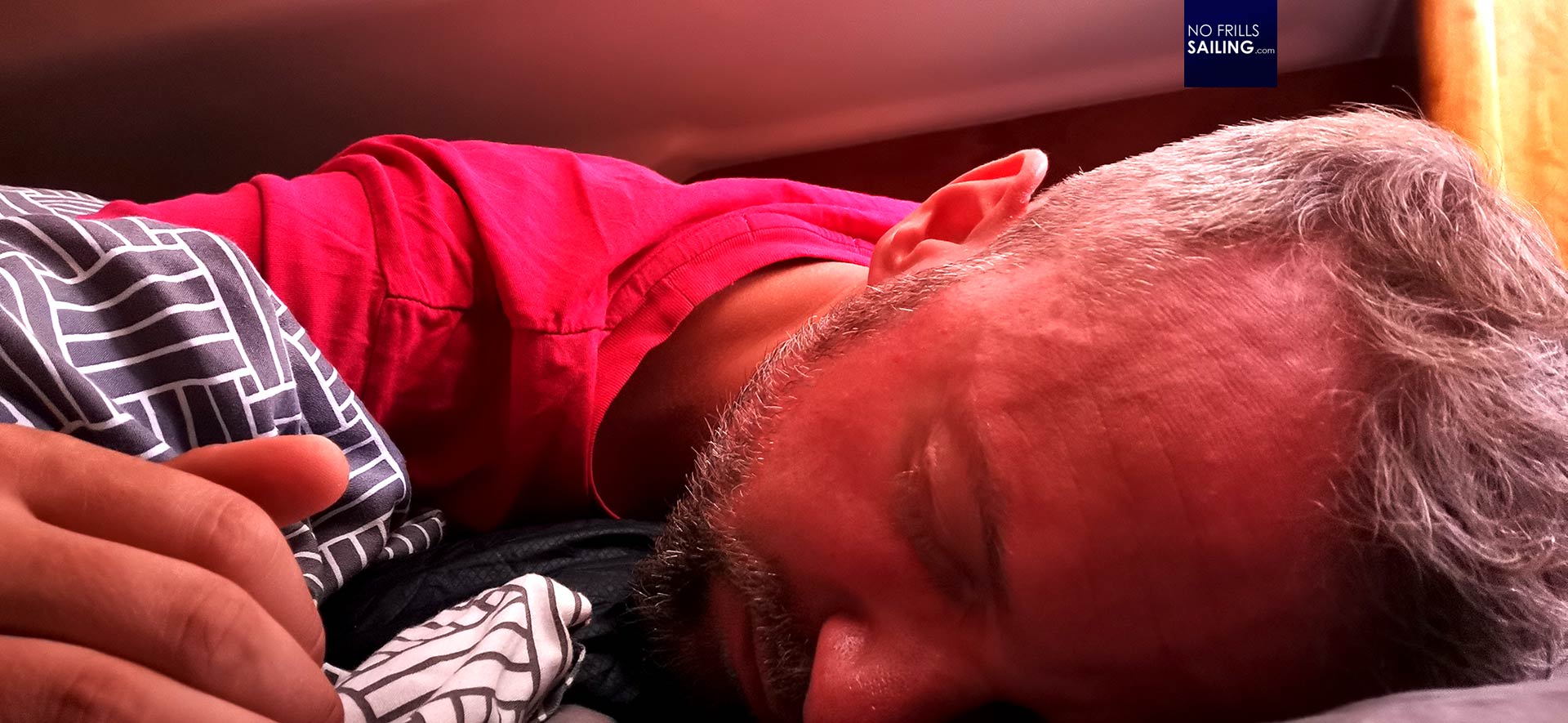
Down below in my berth, snugged into my sleeping bag, I just can´t find deep sleep. The engine is again running for quite some time now and I ask myself where this damned wind is and when it finally will be setting in. What if the forecast wasn´t right? Where to go if no wind at all would be appearing? I was battered by all these questions and took out my phone every now and then to calculate distances and times to possible points to escape to. I repeatedly check the forecast and re-evaluate my calculations … until I can´t do more than give in, give myself, the boat and her crew into the hands of Rasmus, the God of the Winds, and hope that he might be graceful to us. I sleep away, disregarding the noise of the engine, gently pushed to either side of my bunk by the waves which are building up ever so gently. Tomorrow we will be out in the Biscay …
You may read all articles of the Biscay- and Channel-crossing by clicking on this hashtag #biscaysailing
Also interesting to read:
Sailing from Lisbon via Madeira to the Canary Islands
A pretty perfect summer sailing trip in the Baltic Sea
Seasickness and how you might overcome it
